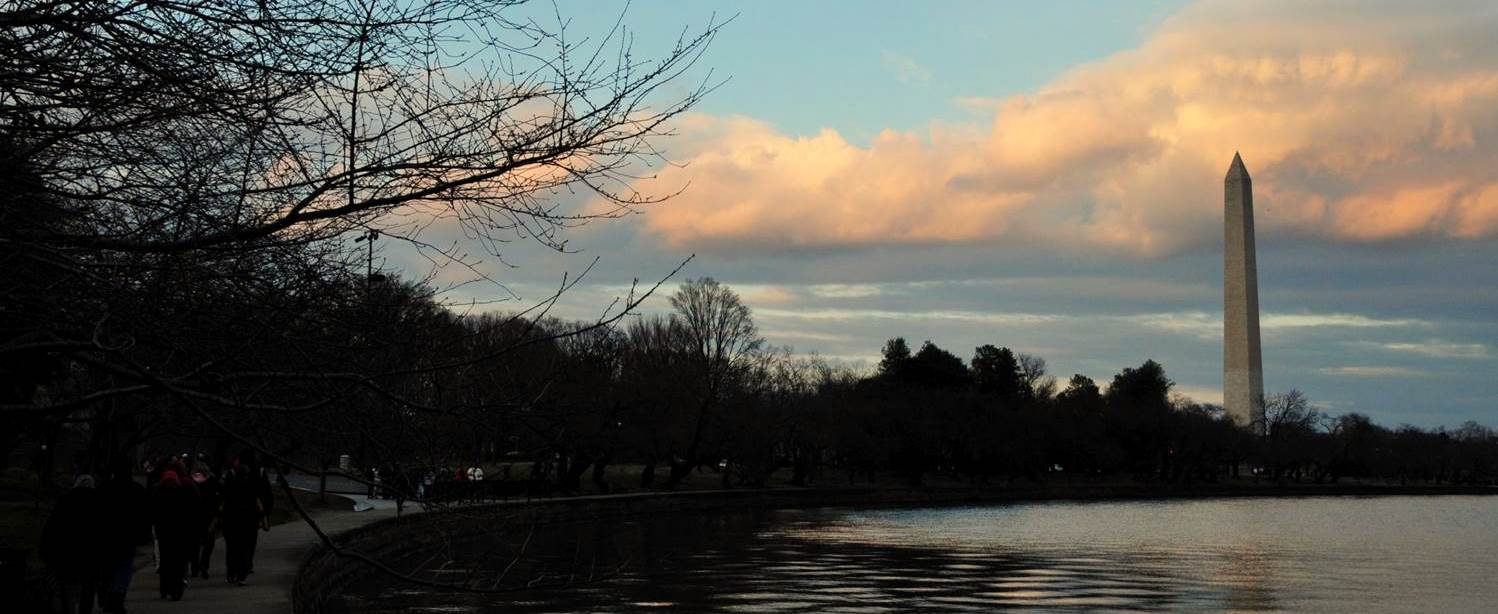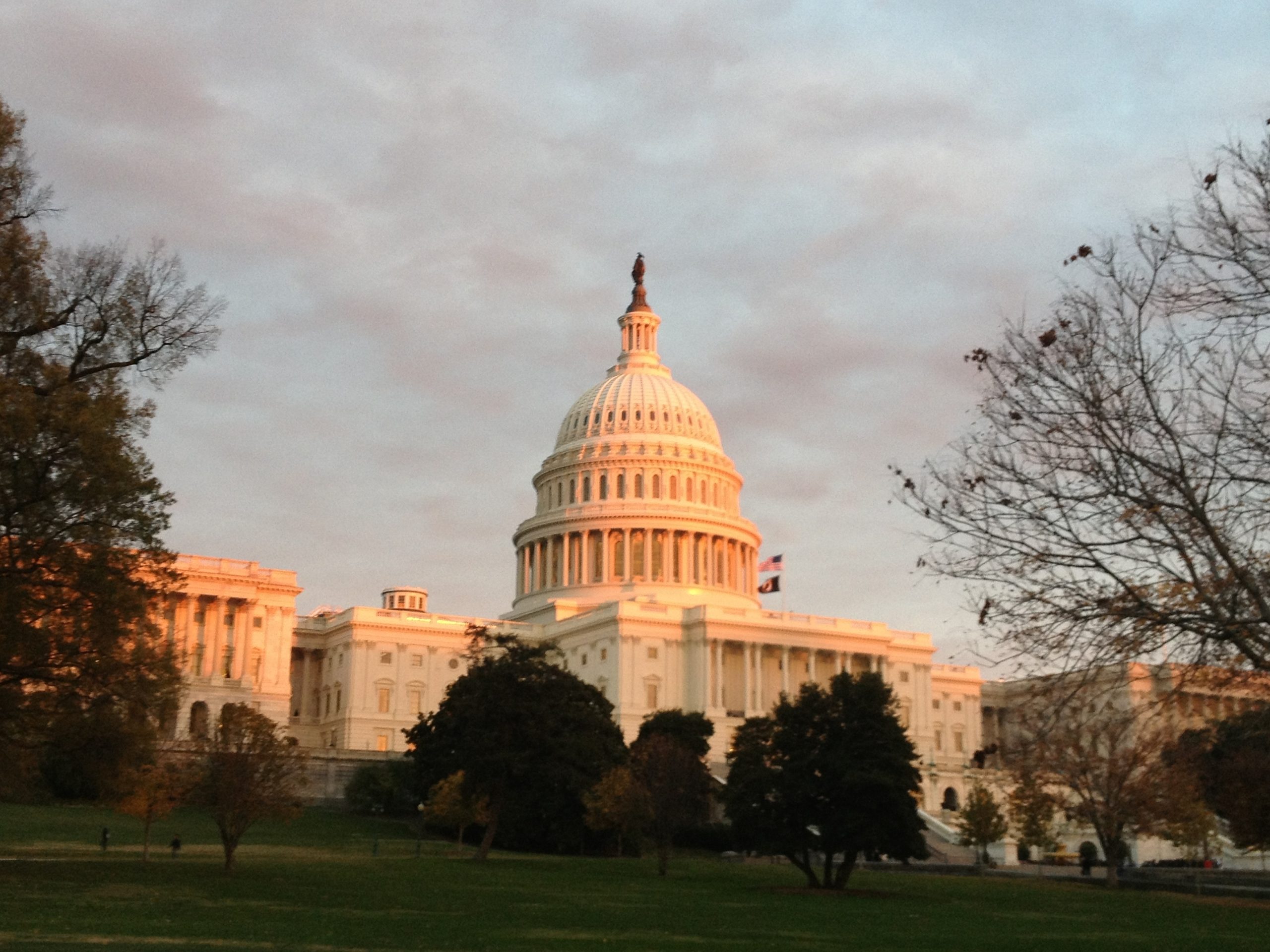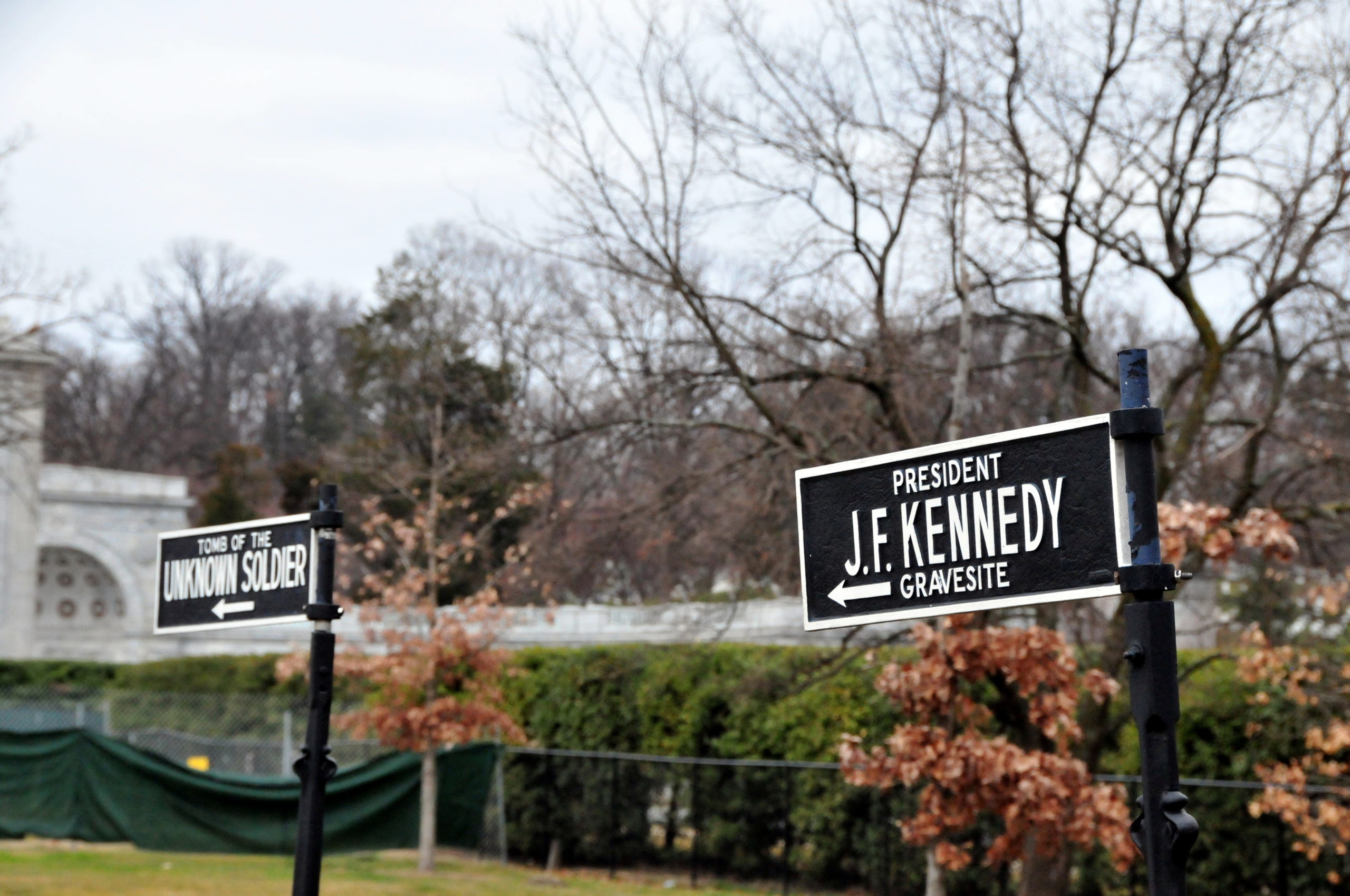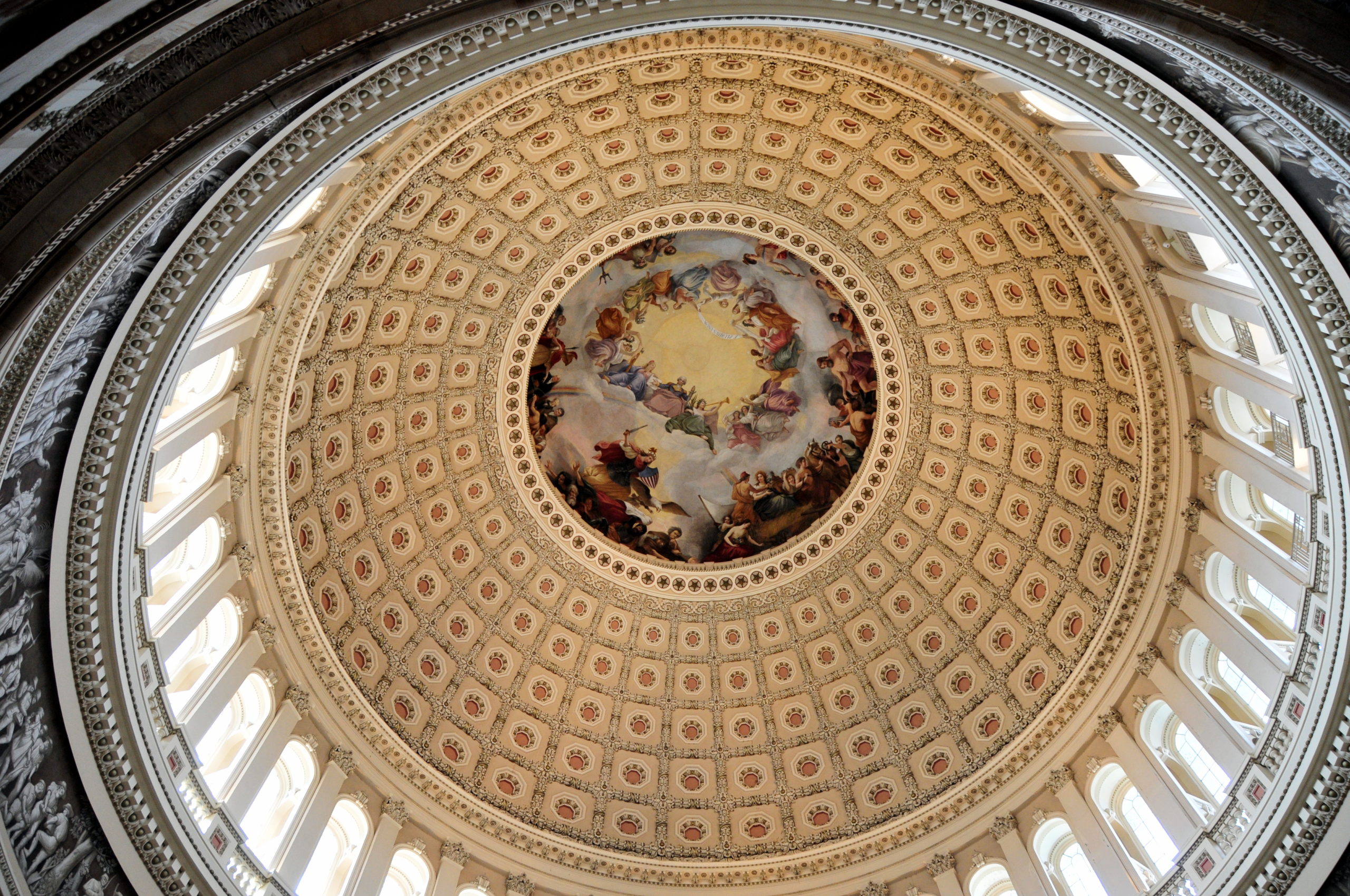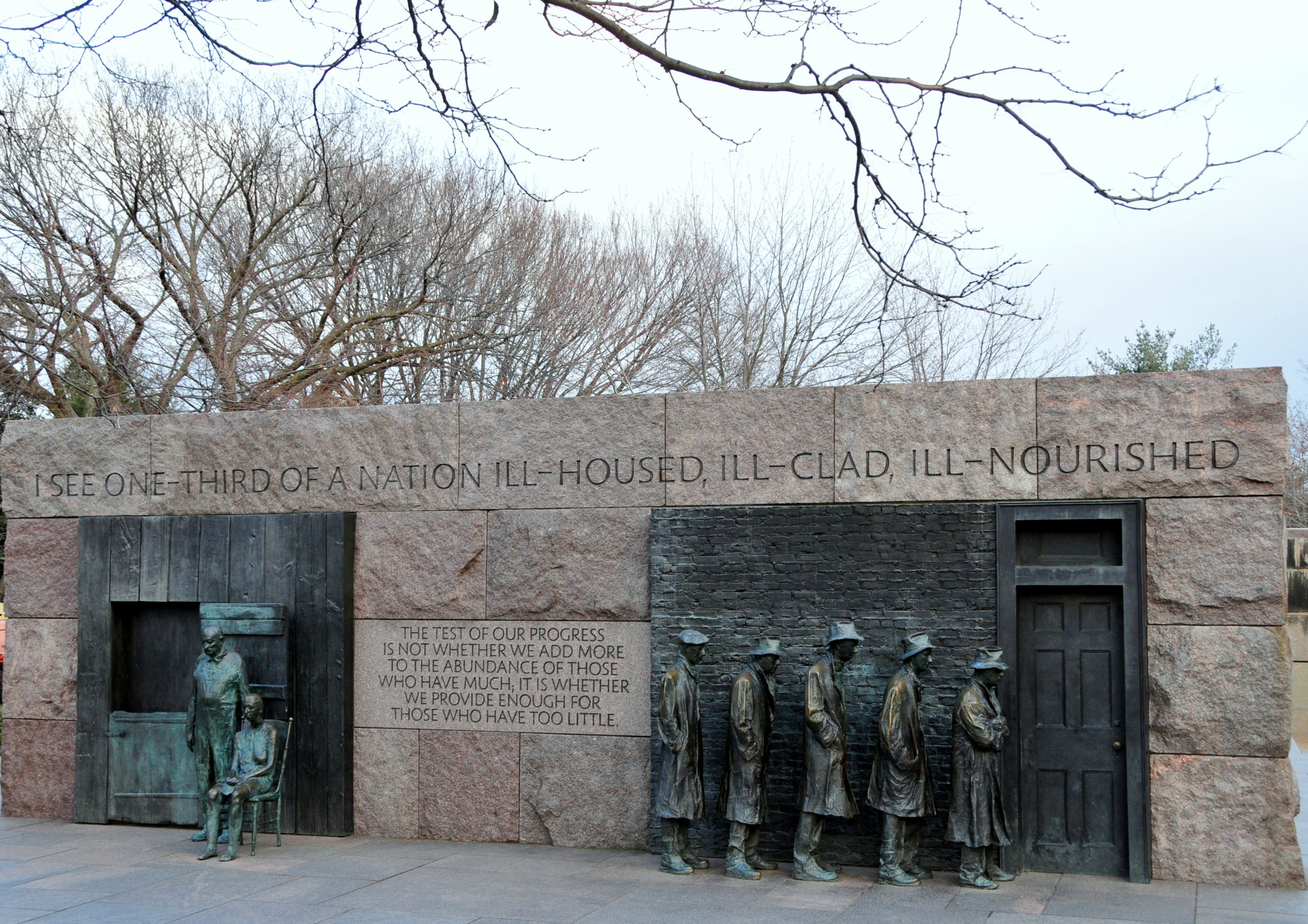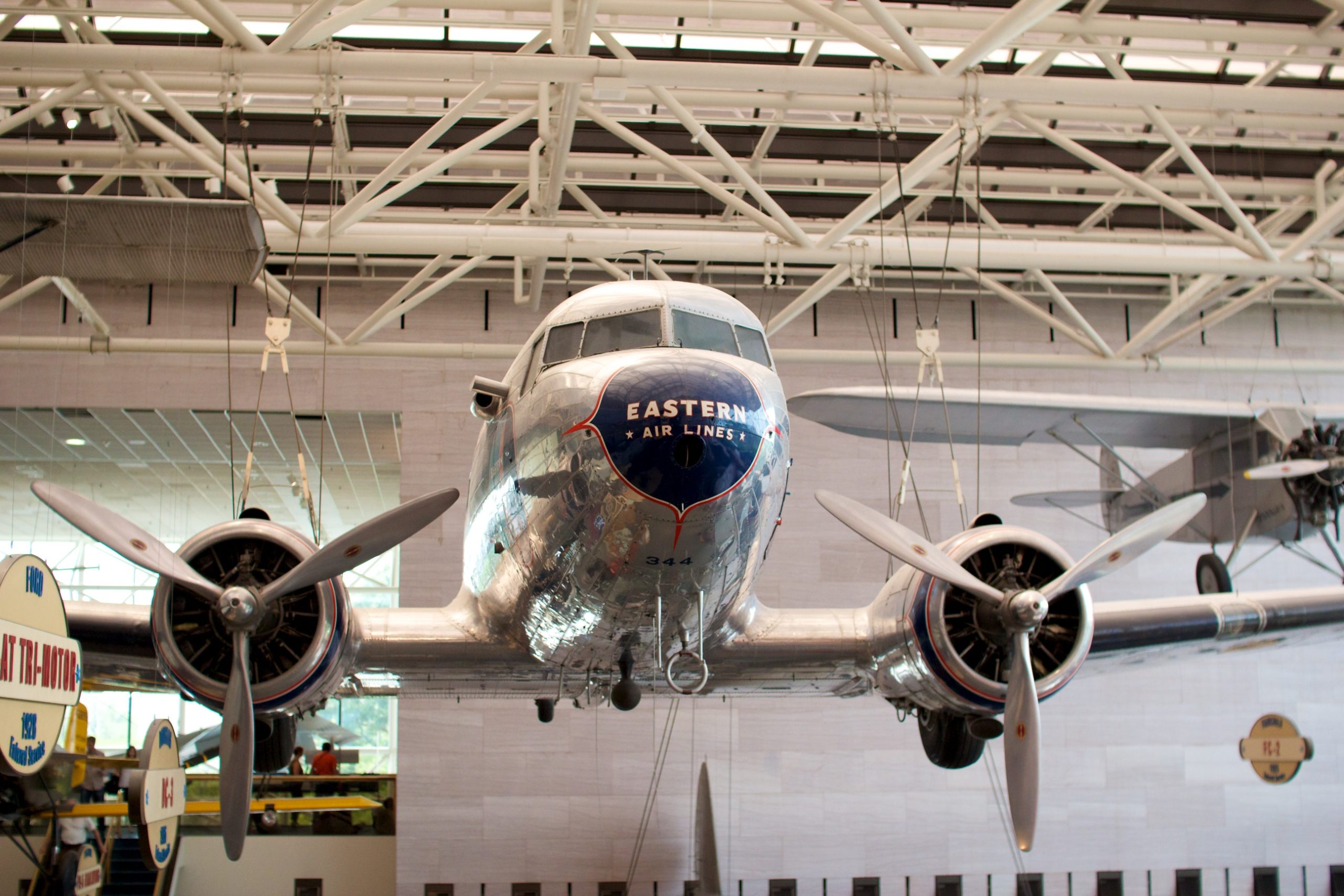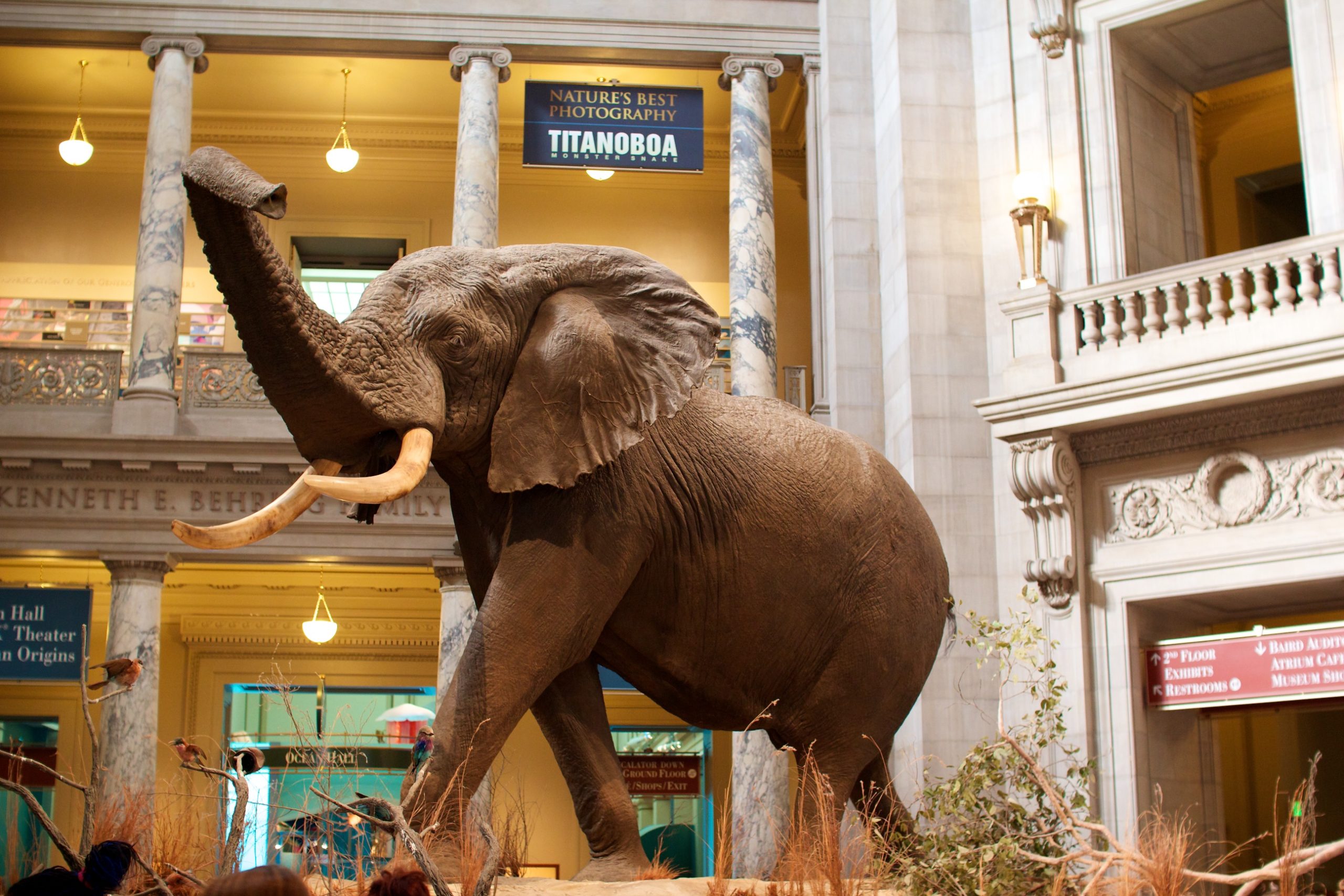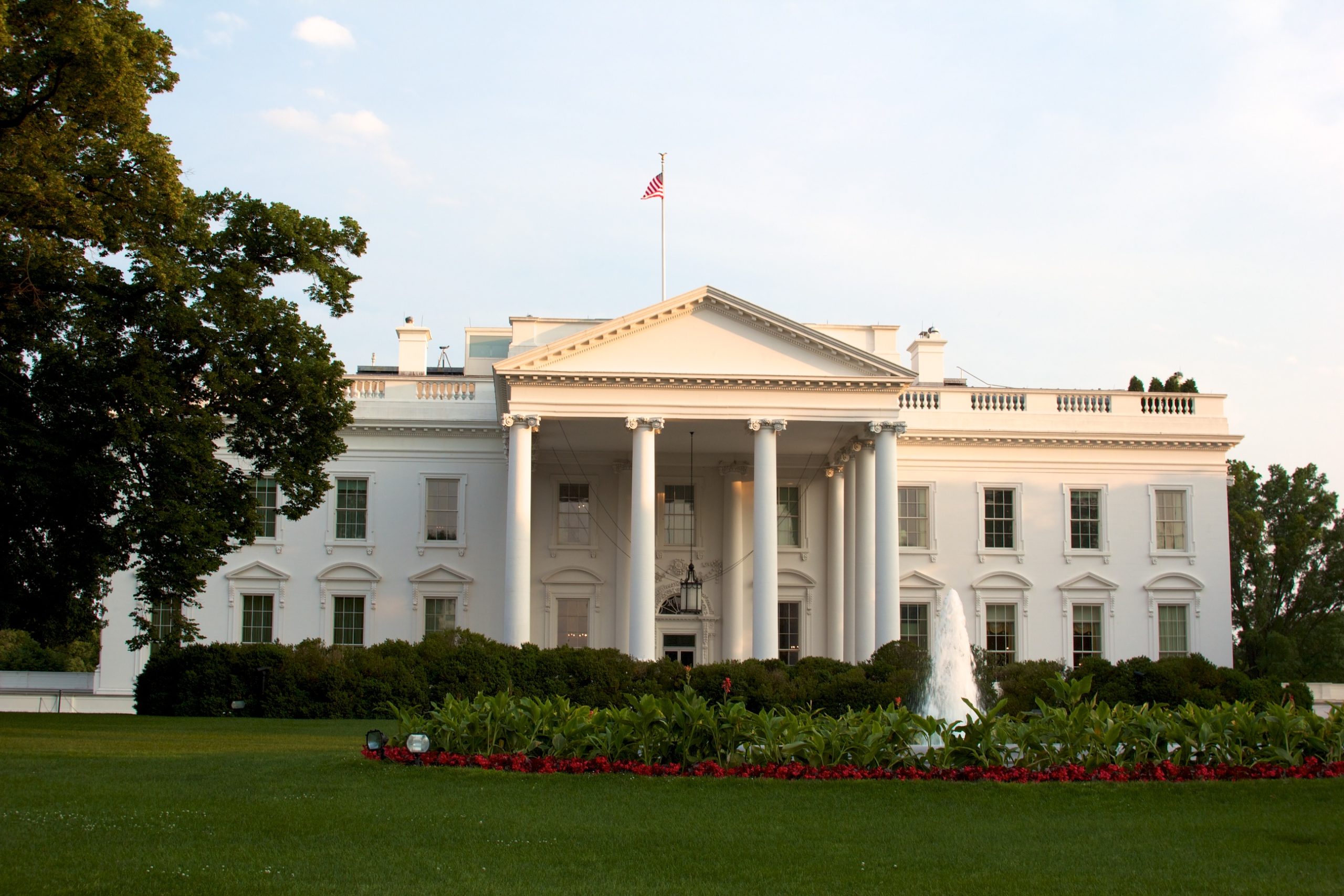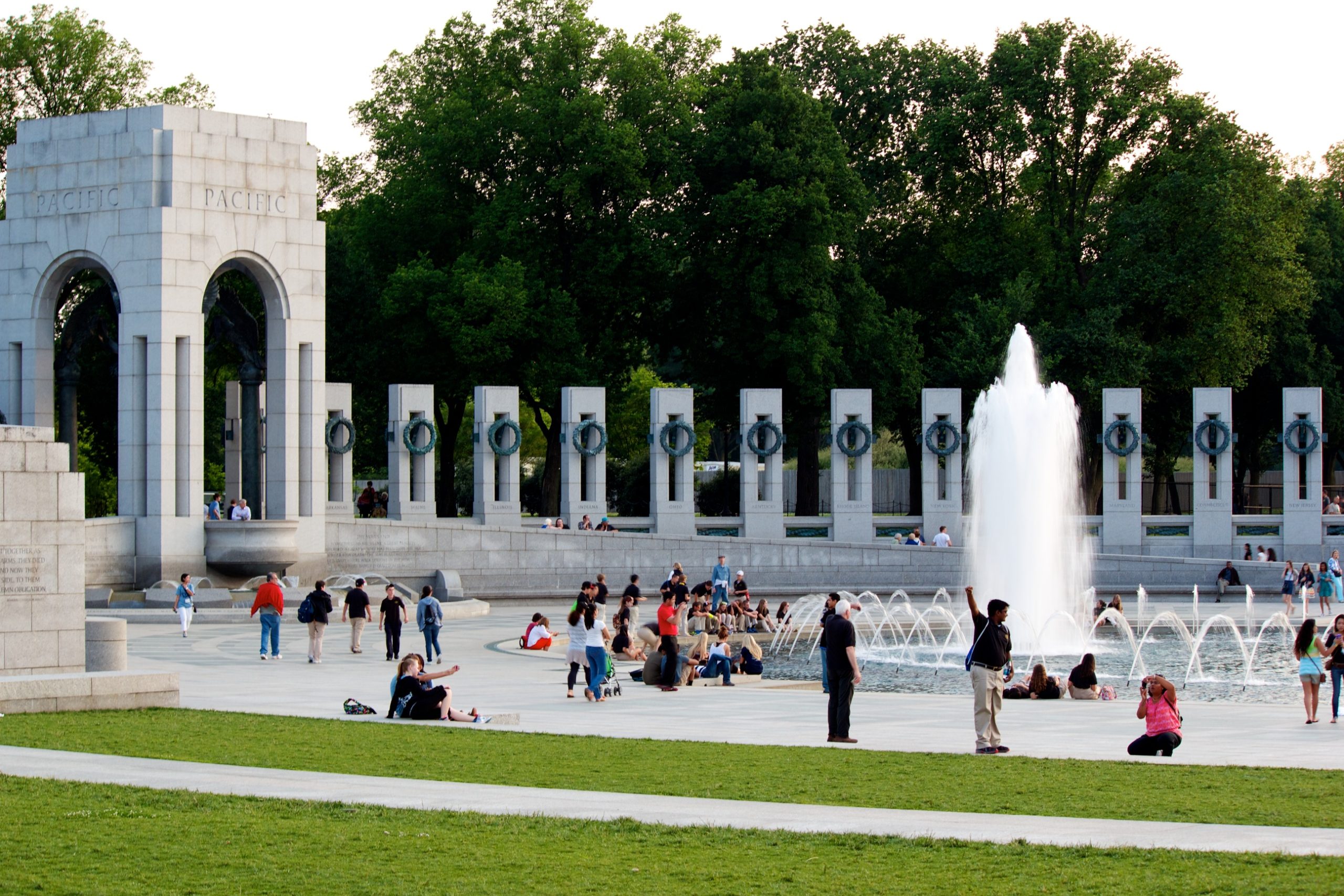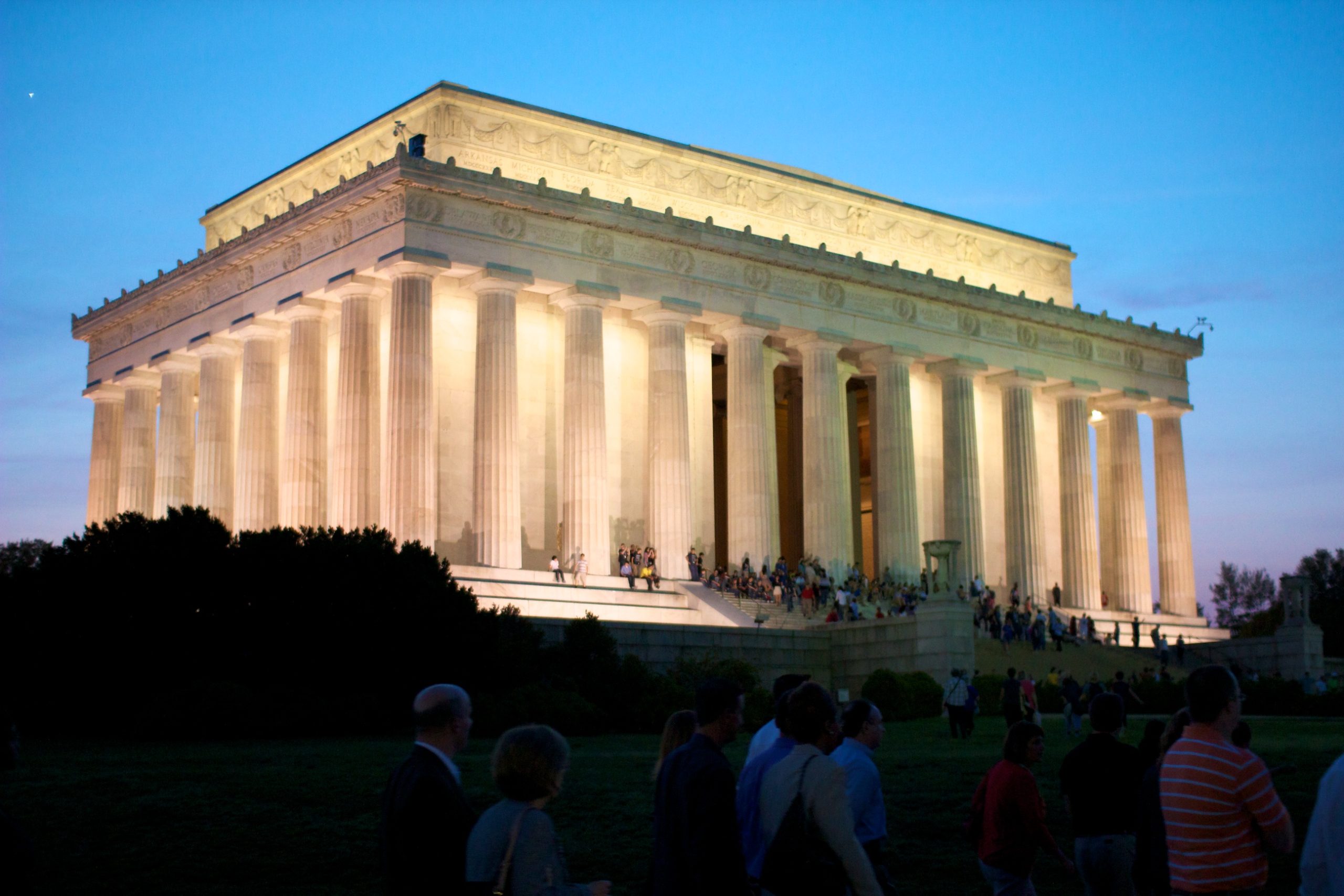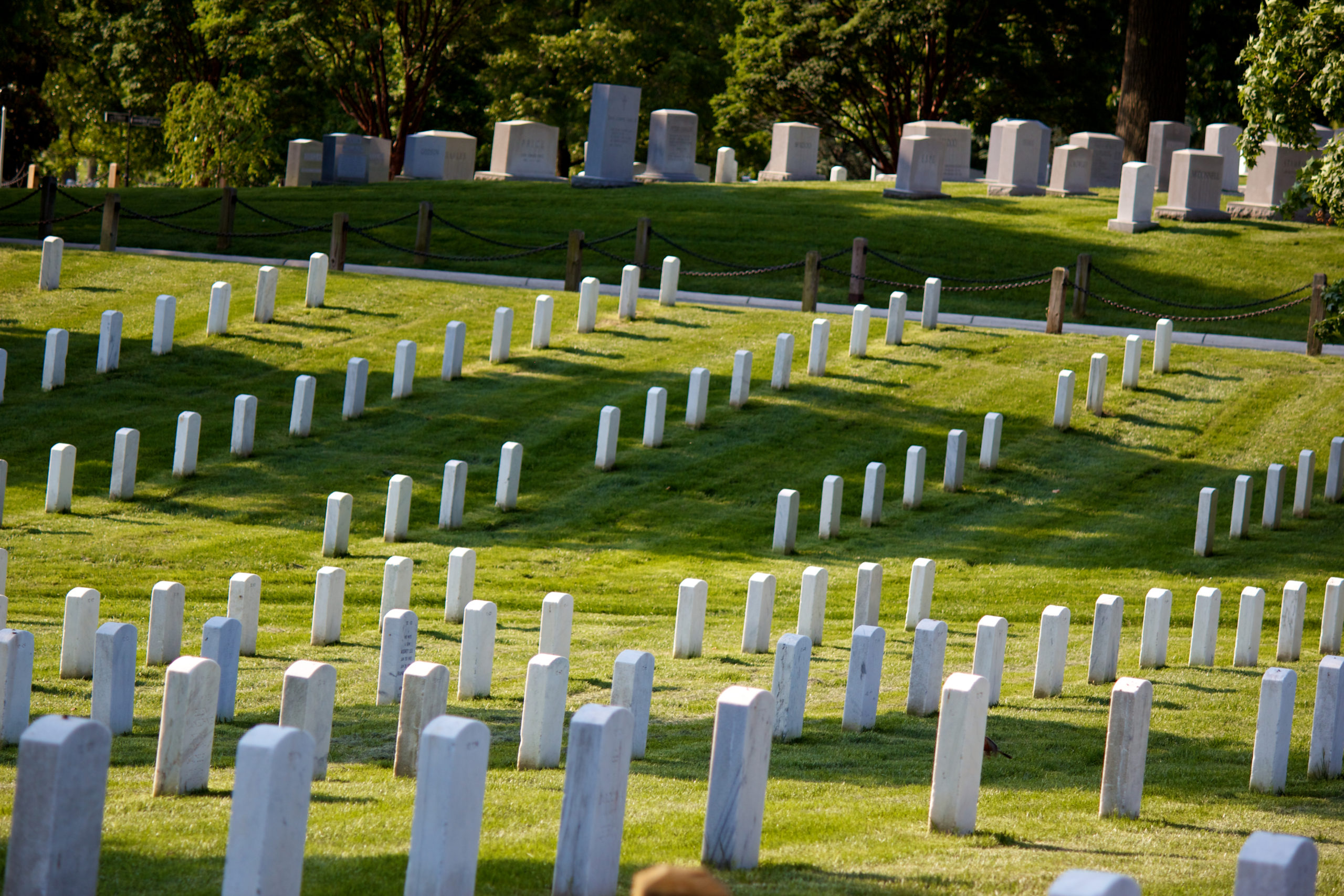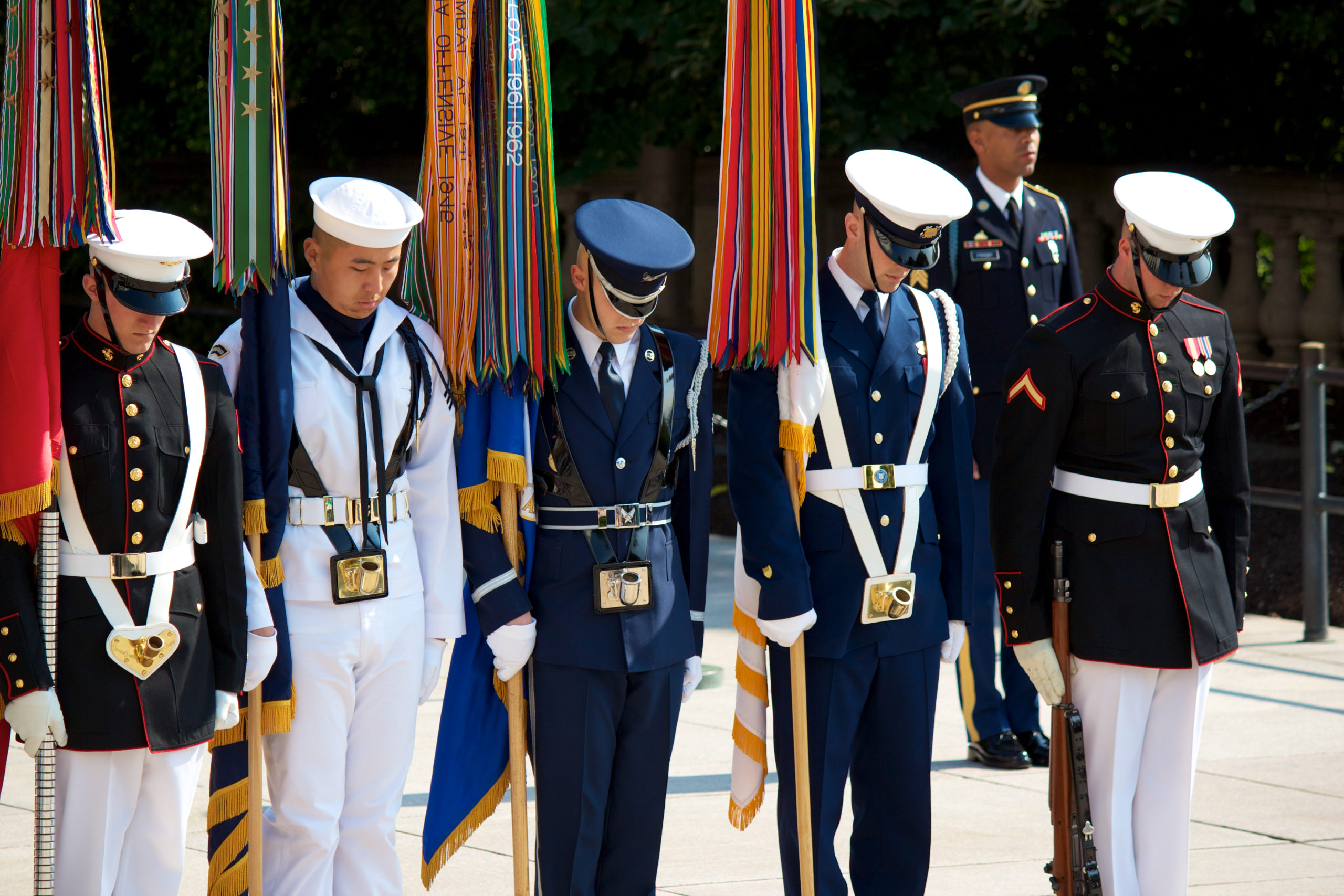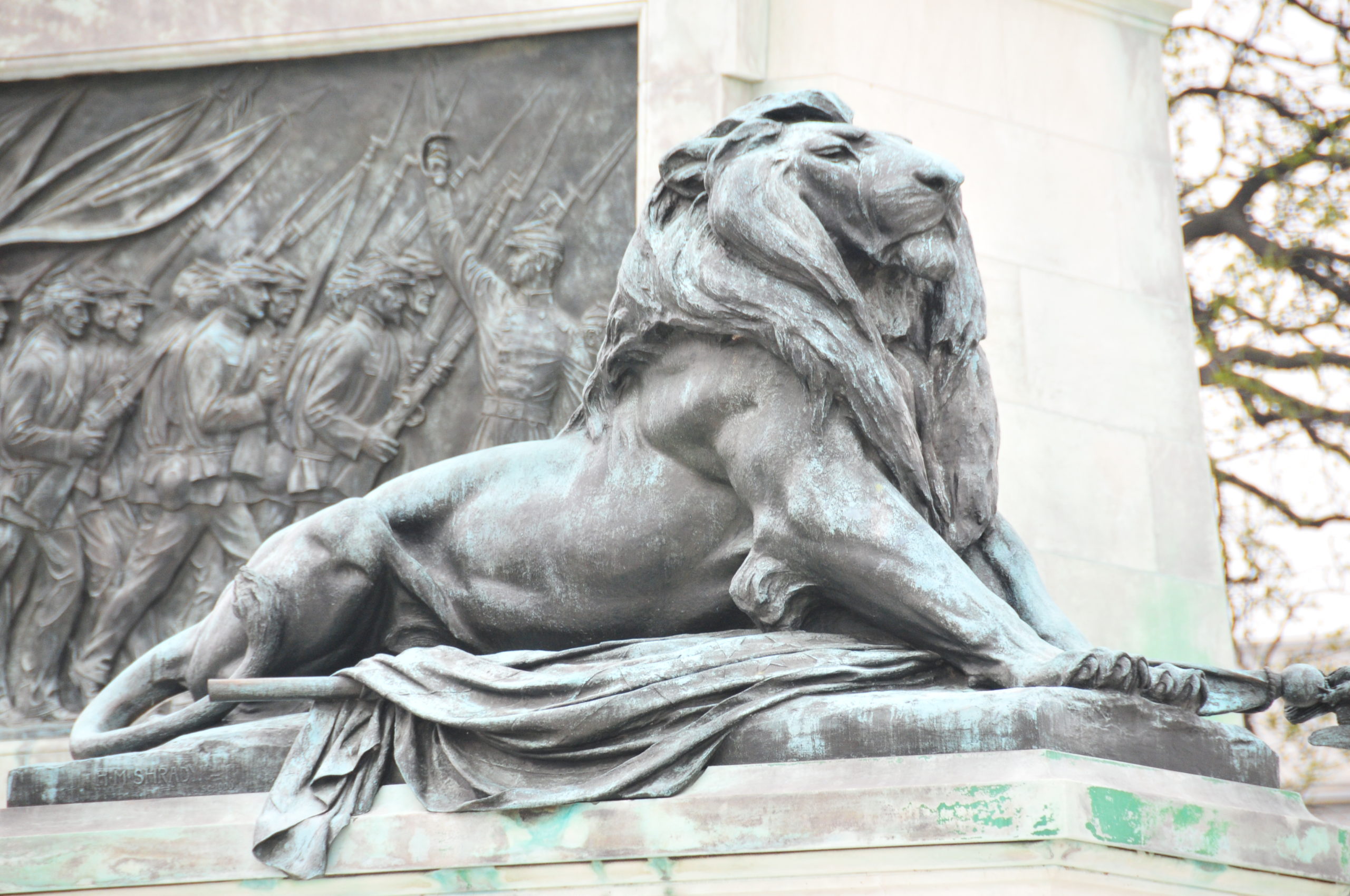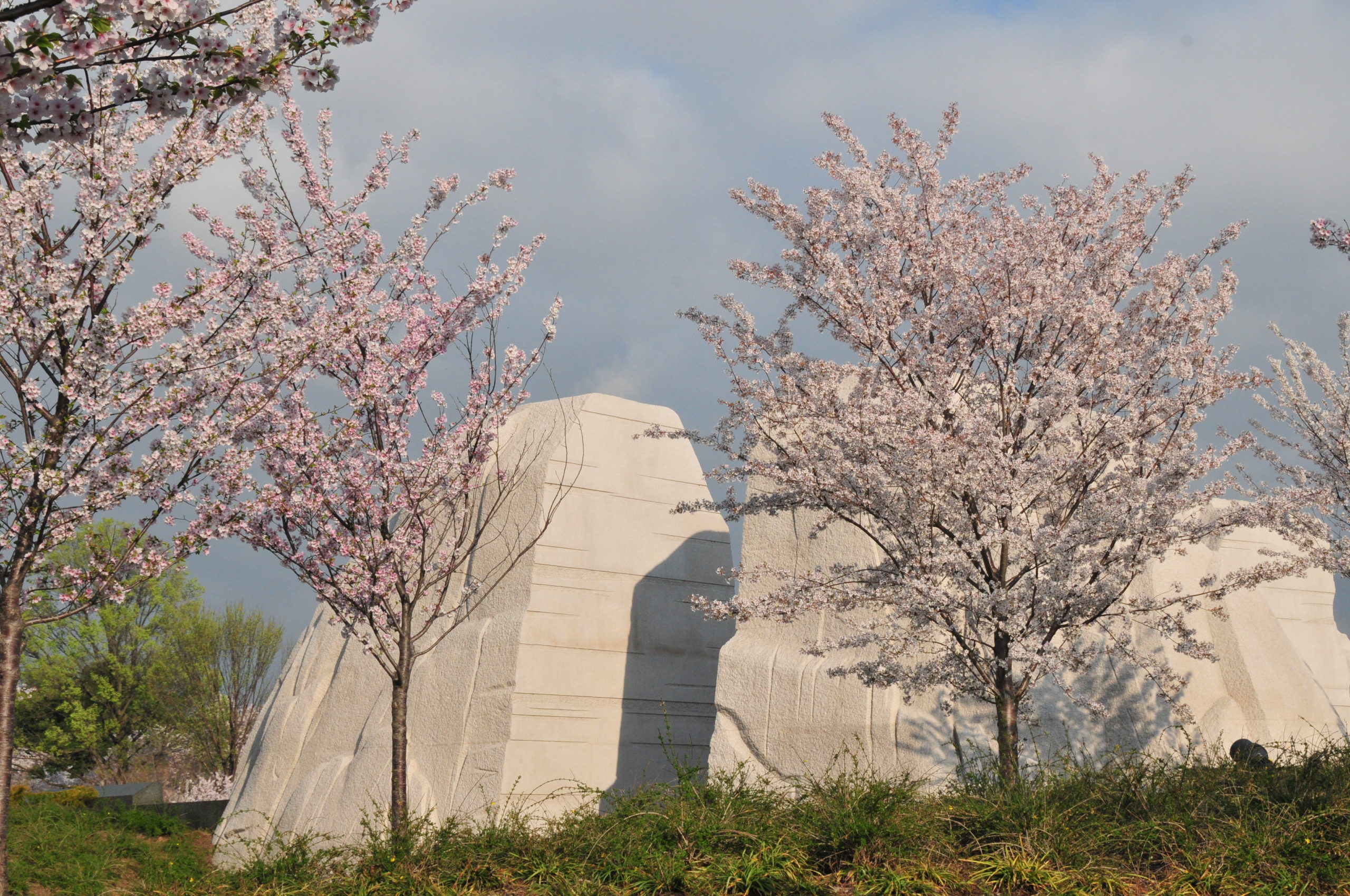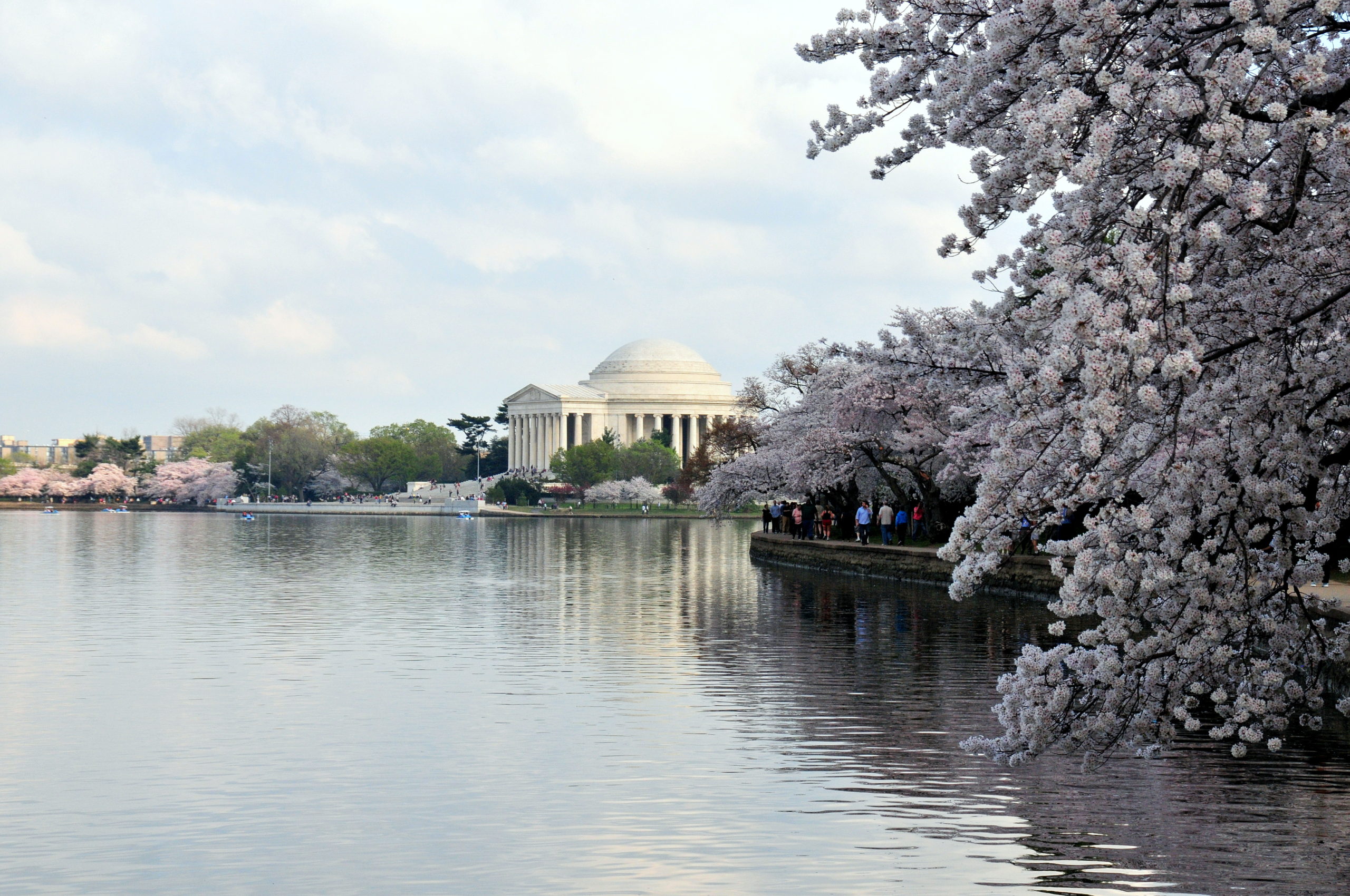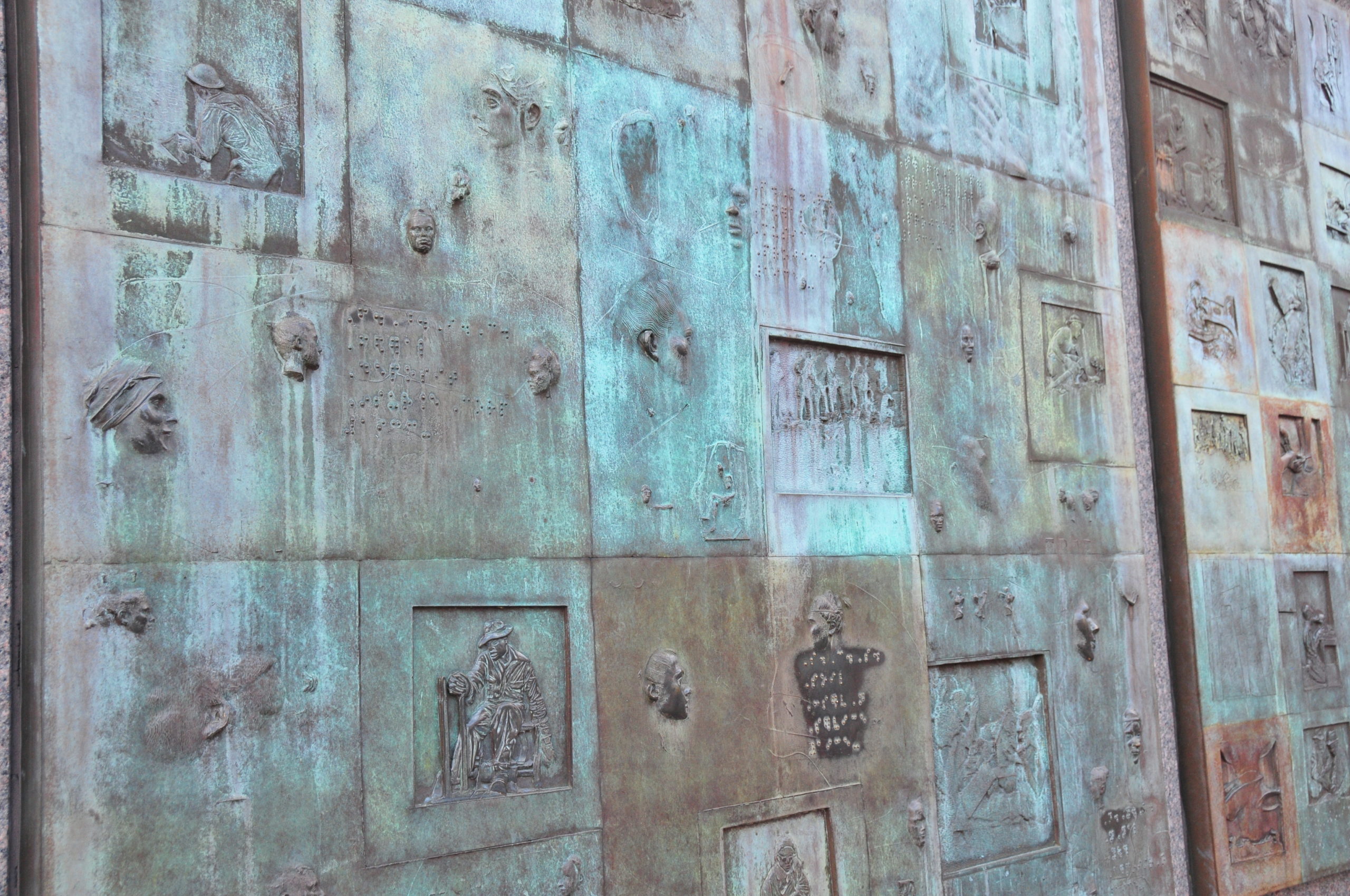Get Started.
Building your commentary is an ongoing process and learning experience. The following sections are starting points for learning the facts about sites commonly included in Scholastica itineraries. Add in stories and create a logical flow of information that matches your style.
Washington DC
The District of Columbia is approximately 68 square miles in size. The District was 100 square miles until 1846, when Arlington and Alexandria were returned to Virginia.
District streets running North to South are numbered and the streets that run East to West are lettered. Avenues that run diagonally are named for States. The City is divided into 4 quadrants: NE, SE, NW, SW, with the US Capitol Building as the center.
Pierre L’enfant, who was the first to lay out the plans for the Nations’ Capitol, envisioned circles (modeled after Paris) as possible strategic areas for military headquarters and fortification in the event of attack on the city. These circles are the many parks, squares, and traffic circles that are today prominent within the city.
Constitution Avenue is the longest avenue in the city. For one hundred years it was known as “B” Street. Before that it was part of a canal going to Georgetown. Lock No. 1 was located at Constitution and 17th Streets. The lock keepers house still stands.
Streets moving from the center of the city in the NW and NE quadrants begin as single letters. As the city grew, new street names were assigned with two syllables alphabetically, then, as you approach the Maryland border, three syllables. You will know how far you are from the center of the city when travelling north by the letter of the street name and the number of syllables.
No commercial aircraft are permitted to fly over the District because it is guarded air space. Planes that take off from National Airport follow the Potomac River for two reasons: (1) To avoid the air space and (2) the river helps to deaden the sound of the engines.
Despite popular belief, no law has ever limited buildings to the height of the US Capitol or the Washington Monument. The Heights of Building Act of 1910 amended the restrictions to allow buildings that are no taller then the width of the adjacent street plus 20 feet so that is why there are no skyscrapers in the District of Columbia.
Using the Washington Monument as the center of a compass you will be able to know which direction you face. The White House is North, Jefferson Memorial is South, Capitol is East, and Lincoln Memorial is West.
Air Force Memorial
The Air Force Memorial itself is 270 feet high and appears to be soaring. Its array of arcs against the sky evokes a modern image of flight by jet and space vehicles. At the same time, it enshrines the past in permanent remembrance of the pioneers of flight who came before, and pays homage to those of the future.
Once the decision was made to incorporate vertical elements, the number three became important. “Three” is resonant with significant associations for the Air Force, including the three core values of today: Integrity first, Service before self, and Excellence in all we do. It is also the smallest number of elements needed to define and enclose a space. The spires are asymmetrical and dynamic. Each is a different height, causing the view of the Memorial to be different at every angle.
A metallic, stainless steel surface forms the equilateral triangles that form the Memorial spires with the jointing details specifically minimized. Each spire is illuminated by its own light source. At the entrance from the west stands the Honor Guard, symbolizing patriotism and power. From here, the bluestone path moves north to the Glass Contemplation Wall, a glazed independent panel with meditative inscriptions. It symbolizes the presence of all of those who are gone. Halfway on the journey back and forth, one will find the heart of the Memorial – a triangular prow bounded by three spires. Standing within the soaring forms, one can see the Washington Monument. A stepped stone plinth runs parallel with the pathway and can act as seating for special events as well as for the “trooping of the colors.”
The landscaping edges the active site with thick rows of mature trees, welcomed for their shade, lined mostly along the west of the complex and carefully shaped to intensify the Memorial experience.
Arlington National Cemetery
Arlington House Story
The house was built by George Washington Parke Custis, whose father John, was the son of Martha Washington by her first husband. When John Custis died during the Revolutionary War, his two children, George and Nelly, were brought to Mount Vernon and raised by the Washingtons.
The 21-year-old Custis moved to a 1,100 acre tract of land his father had left him that was across from the newly established Federal City. Custis set out to build a mansion worthy of George Washington’s memory. Architect George Hadfield’s mansion was the areas first example of the Greek Revival Style of architecture.
Although he had limited funds, Custis proceeded with construction using bricks made from clay found on the property and timber from the forests. By 1804 the south wing had been completed, the same year he married Mary Lee Fitzhugh. The mansion completed in 1818 was named Arlington after the original family estate on Virginia’s Eastern Shore.
Robert E Lee, a distant relative of the Custis family, grew up in nearby Alexandria and visited the Arlington estate several times as a boy. Lee became fond of Mary Randolph Custis and eventually married her in 1831. The Lee’s had seven children, six of which were born at the Arlington House.
When Custis died in 1857, the Lee’s inherited the Arlington House.
Lee was called to Blair House and offered the command of the Union troops in April of 1861. Seven southern states had already seceded from the Union, when Virginia seceded; Lee rejected the command of the Union. After resigning from the army on April 22, 1861, Lee left Arlington and went to Richmond where he accepted the command of the Virginia forces. He would never return to his beloved home again.
Recognizing the strategic importance of the Arlington Plantation, General Winfield Scott ordered the Union force to seize the estate. On May 23, 14,000 Union troops marched across the current sights of the Key and 14th Street bridges to Arlington. A Confederate army with medium to long range artillery would not place the federal institution in jeopardy.
In 1862 Congress levied property taxes on land claimed by the Confederacy. Under the provisions of this legislation, a tax of $92.07 was assessed on the Arlington Plantation. Mrs. Lee was confined to a wheelchair and unable to pay the tax in person. The federal tax commissioners would only accept the payment from the property owner; she was unable to travel from Alexandria to pay the tax. Arlington was officially confiscated and the property sold at an auction to the U S Government for $26,810 with the government the only bidder.
With numerous battles being fought near the Capitol, casualties mounted rapidly and no room to bury the dead. In 1864 the war department was in desperate need of burial ground. General Meigs thought the Arlington sight was appropriate for a National Cemetery and selected 200 acres surrounding the mansion. General Meigs held a deep resentment toward the south and it was clear that his intentions to bury soldiers near the mansion would assure the Plantation would not be returned to Lee. On June 14, 1864 orders were issued to set aside the mansion and grounds as a military cemetery. That same day 65 burials took place, including several in Mrs. Lee’s rose garden. Meigs thought that by burying soldiers so near the house that Lee would never return to the house. He never did.
At the end of the war the cemetery consisted of 200 acres and contained approximately 16,000 burials.
When Lee die in 1870 and his wife shortly after, the claim to Arlington fell to the oldest son, George Washington Custis Lee. Congress rejected his request to recognize him as the rightful owner. Lee filed suit in 1877 demanding eviction of the federal government. The Circuit Court of Alexandria ruled in his favor and ordered the government to vacate the property and restore it to its antebellum appearance. Unable to disinter 16,000 soldiers and the government exhausting all legal recourses, the Lees were offered $150,000. The Lee family accepted the payment in 1883.
Near Bull Run bones of thousands of soldiers were dug up and hauled to Arlington. A circular pit, 20 feet wide and 20 feet deep was dug. 2,111 bodies from Bull Run were buried in this pit in Mrs. Lee’s rose garden.
The original grave markers were made of wood and had to be replaced about every 3 years. The Quartermaster General, Montgomery Meigs was looking for an alternative. In 1872 the government adopted the traditional white marble tombstone for use in all national cemeteries. These uniformed stones are required for all enlisted areas.
The uniformity policy did not apply to officers. Their grave markers were only limited in size and scope to the family’s personal wealth and imagination.
Arlington’s Memorial Amphitheater
The Amphitheater was built to accommodate the crowds that paid tribute to our veterans. The new Amphitheater was completed in 1920. This large white marble structure seats 5,000 people and is used for special ceremonies on Memorial Day and Veterans Day. There are 42 special seating boxes around the inside Doric marble colonnade that encircles the Amphitheater. The stage area is large enough to accommodate 250 to 300 people. Inscriptions of quotations from Presidents Washington and Lincoln, as well as the names of prominent military figures and battle-sights, adorn both the interior and exterior walls of the Amphitheater. Around the exterior wall above the colonnade are inscribed the names of 44 major battles from the War of Independence, the War of 1812, the Mexican War, the Civil War, and the Spanish-American War.
Under the Amphitheater is the area where the Tomb Honor Guard practices and remains while on guard duty during their shifts. There is also a chapel in this area.
Forming part of the east entrance to the Amphitheater is a large hall, presently used as a Memorial Display Room. On the first floor of this area are the decorations, commendations, plaques, and other memorabilia associated with the four unknowns buried on the plaza directly east of the Memorial Amphitheater. Included are the flags, which have draped the caskets of each of those servicemen, the Medal of Honor, which each has been awarded, and the numerous awards presented on their behalf.
On the second floor of the pavilion is the Medal of Honor Room, designed and used solely to display and honor the names of all servicemen who have been awarded the Medal of Honor.
Arlington National Cemetery Facts
- Flags located in the cemetery are lowered to half-staff thirty minutes before the first burial and remain lowered until after the last funeral is completed. Flags are flown at full staff at all other times except during periods of mourning and on certain national holidays.
- President John F Kennedy made three official visits to Arlington while in office, the last on Veterans Day, 1963, just 11 days before the assassination.
- Jacqueline Kennedy and Attorney General Robert Kennedy placed several items in the President’s casket prior to burial. These include three letters, a pair of gold cuff links, a piece of scrimshaw engraved with the presidential seal, a silver rosary, and a PT-109 tie clasp.
- Arlington is the only cemetery authorized to use horses and caissons as a regular part of its funeral ceremonies.
- Every American President since Woodrow Wilson has visited Arlington National Cemetery while in office.
- Arlington is the best known of the 109 operating National Cemeteries. The largest, however is the Calverton National Cemetery in New York, consisting of 902 acres.
- Over 1,600 ceremonies are conducted at the Tomb of the Unknown Soldier annually. Foreign heads of state and dignitaries regularly place a wreath at the Tomb to honor American Veterans. During state visits, honor guard contingents from all of the Armed Services participate during the ceremonies at the Tomb.
- Arlington currently averages 25-35 funerals per day. The cemetery is expected to reach its capacity around the year 2030.
- There are 4,275 unknowns buried at Arlington, most from the Civil War era. During that conflict, a soldier killed in action had a one in three chance of not being identified.
- During the Memorial Day weekend, members of the 3rd infantry place individual American flags on all the graves. The flags remain in place until after the conclusion of the Memorial Day ceremonies.
- There are two American Presidents buried in Arlington-John F Kennedy and William Howard Taft.
- Three of the 6 Iwo Jima flag-raisers are interred at Arlington: Ira Hayes, Michael Strank, and Rene Gagnon.
- Dead from every American War from the Revolutionary War on are buried at Arlington. Pre-1864 dead were re-interred after the cemetery began operations.
- Five of the nine World War II five star generals are buried at Arlington: Halsey, Marshall, Leahy, Arnold, and Bradley.
- There are two mausoleums, the Miles and Sullivan, located in the cemetery. Above ground interments are no longer permitted.
- Arlington House was converted into a monument to Robert E Lee by act of Congress in 1925 and is administered by the National Park Service.
- Arlington is the only national cemetery operated by the United States Army. All other cemeteries fall under the Veteran’s Administration.
- 44 foreign nationals from 10 different countries are buried here. Most were associated with embassies during wartime and died in the US, which entitled them to burial in a national cemetery. One German and two Italian prisoners of war were interred in accordance with the Geneva Convention, which entitled captured soldiers to burial with military honors.
- Over 3,800 former slaves are buried at Arlington. Most fled to Washington during the Civil war to escape bondage while other lived in the Freedmen’s Village that housed some 1100 blacks after the war. The Village located near the site of the present Memorial Amphitheater.
- Arlington Plantation consists of 1100 acres.
- Arlington Cemetery covers 624 acres.
- Pierre L’Enfant is buried in front of the Lee Mansion and is marked with a marble slab with his plan for the city of Washington on top.
Arlington Cemetery Interesting Gravesites
-
-
- Major General Wallace Randolph: An artilleryman in the army. His family had a cannon for his marker. He said he spent a lifetime behind a cannon and preferred to spend an eternity under one.
- Sir John Dill: British Field Marshall who remained in the United states during World War II to help secure the necessary cooperation between the British and American forces. He earned the trust and confidence of everyone with whom he worked. Both the United States and Great Britain recognized the great contribution made by Dill. He died while stationed in Washington in 1944 and received the honor of being buried at Arlington Cemetery. His is one of only two equestrian statues in the cemetery.
- John Wingate Weeks: Senator and Secretary of War. He ran unsuccessfully for the Republican Presidential nomination in 1916. Near the tomb of J F K and is visible as you walk up the hill. The granite marker is a large bench and catches the eye.
- Joe Louis: He won the heavyweight boxing title in 1937 and held onto it longer than any other boxer, losing it only to retirement in 1949. Known as the “Brown Bomber”. When WWII began he volunteered for service in the army. He served in North Africa and Europe where he fought before Allied troops, appearing before 2 million soldiers. At the conclusion of the war he was awarded the Legion of Merit award for his contributions to the war effort.
During WWII Hitler had proclaimed the Nazis as a superior race. Louis had a title fight with a German boxer named Max Schmelling. At the time Allied moral was low and the German Army had the upper hand. Louis proceeded to knock out Schmelling in the first round, proving that the Germans were not indestructible. In spite of his contributions, upon his death Louis did not meet the stringent requirements necessary to be buried in a National Cemetery. President Ronald Reagan quickly waived the requirements and authorized his burial at Arlington. His grave has a special Brown Headstone and is located just below the Amphitheater and the Tomb of the Unknowns. - Lee Marvin: Buried next to Louis. Actor in “Dirty Dozen” and “Cat Ballou”. Served in WWII in the Marine Corp
- Pierre L’Enfant: Designer of Washington. His grave is by Arlington House overlooking the city he planned. The table- top tombstone has the original plans for the city carved on top.
- Philip Kearny: The other equestrian statue in Arlington. It is located near Arlington House and the old Amphitheater. Kearney was a Mexican War and Civil War Hero who gave hi life at Chantilly, VA in 1862. He lost his right arm during a battle during the Mexican War but continued to lead his troops in battle during the Civil War using one arm. The Cross-of Honor was created in his honor to be awarded to noncommissioned officers and privates for exceptional valor in battle. That commendation has evolved into the Medal of Honor, the highest decoration given to American military personal.
- Ignace Paderewski: Polish leader, composer, and pianist who fled to the U S in 1940 in exile when the Nazis overran his native country. He was offered temporary repose in the mast of the Battleship USS Maine when he died. He would then be returned to his native Poland when his country was again free. In 1992 his body was returned to Krakow.
-
Canadian Cross of Sacrifice
This large cross stands near the Challenger Memorial. It is a tribute from the people of Canada to all American soldiers who died while serving in the Canadian Military.
Challenger Memorial
Across from the amphitheater along the walkway leading to the Maine Memorial is the Challenger Memorial. The Challenger was scheduled for launch on January 22, 1986. The mission was to last 6 days and to deploy satellites with improved communications and observation of Halley’s Comet. Christa McAuliffe was the first private citizen to be selected for the flight. During the mission she was to deliver a series of educational lessons to the nation’s children on what she called the ultimate field trip. The launch was finally scheduled for January 28th after unseasonably cold weather delayed the original launch. Approximately 72 seconds into the flight at an altitude of 10 miles, the shuttle exploded killing all 7 crewmembers. Michael Smith and Dick Scobee are buried at Arlington along with the remains of the other astronauts in a common grave at the Memorial sight. The bronze and granite monument was placed there on the first anniversary of the Challenger tragedy.
Columbia Memorial
Columbia exploded as it was making its descent to Earth shortly after 9 a.m. on February 1, 2003 leaving a trail of debris across a large swath of Texas and Louisiana. Investigators determined that a chunk of insulating foam that hit the underside of the shuttle’s wing at liftoff on January 16, 2003, caused the damage that ultimately tore the shuttle apart.
The memorial features a bronze replica of the mission patch designed by crew members. The names of the Columbia astronauts: Richard Husband, William McCool, Michael Anderson, David Brown, Kalpana Chawla, Laurel Clark and Ilan Ramon are etched into the bronze, which is set on Vermont marble.
The graves of 29 astronauts – including Anderson, Brown and Clark for the Columbia shuttle, also are in the national cemetery in Arlington, VA.
First Memorial Day
In 1868 General John Logan issued an order which created the first Decoration Day, a day for the nation to honor deceased veterans. The popularity of this holiday increased in ensuing years and was finally declared a national holiday by an Act of Congress in 1888 and later named Memorial Day.
Iranian Hostage Rescue Mission Memorial
This monument is dedicated to the 8 American service personnel who gave their lives in an attempt to rescue American hostages held at the U S Embassy in Iran in 1979. The white stone marker bears a bronze plaque listing the names and ranks of the 3 Marines and 5 Airmen, three of who are now buried in Arlington. Located next to Challenger Memorial.
Interment Requirements for Arlington National Cemetery
-
-
-
- Military service members who have died while on active duty.
- Military retirees with at least 20 years of active duty or active reserve service and those retired for disability.
- Veterans honorably discharged for 30 percent or more disability before October 1 1949.
- Holders of the nations’ highest military decorations, such as the Medal of Honor, Distinguished Service Medal, Distinguished Service Cross, Silver Star or Purple Heart.
- Service members who had been prisoners of war or missing in action.
- The spouse or unmarried minor (under 21 years) of any of the above.
- Any eligible person’s unmarried adult child with physical or mental disability acquired up to age 21.
- The president, as armed forces commander-in-chief.
- Cabinet officials, Supreme Court justices, members of Congress and nationally elected official provided they have an honorable military background.
-
-
Veterans who do not meet these requirements may qualify for storage in the cemetery’s columbarium complex, which houses cremated remains. Any honorably discharged veteran, spouse, and dependent children may be inurned in the same family niche at the columbarium. Any other burials must receive a waiver from the cemetery superintendent, the secretary of the Army or the president.
Mast of the USS Maine
Across from the amphitheater is the mast of the battleship Maine that was sunk in Havana’s harbor during the Spanish-American War. 229 victims of this tragedy are buried here, 62 are known and 167 are unidentified. Around the side of the turret are inscribed the names of all those who lost their lives in the disaster.
Presidential Gravesites
Two Presidents are interred in the cemetery, William Howard Taft and John F Kennedy.
William H Taft’s grave is located to the right of the ceremonial entrance. He is the only President to also be the Chief Justice of the Supreme Court. His wife Helen is buried with him.
John F Kennedy is buried south of Arlington House in direct line with the Lincoln Memorial. It is approached by a granite walkway from the road below. Low curved walls inscribed with quotations from Kennedy define the area. Five marble steps lead to the grave where fieldstones from Cape Cod cover the plot. An eternal flame and simple slate headstones mark the graves of the President, Jacqueline, and 2 of their children. This site was selected because John Kennedy visited Arlington 11 days before the assassination and said here could stay here forever.
Robert F Kennedy is buried a short distance away marked by a plain white cross. Passages from Robert Kennedy’s speeches are inscribed on a wall above a fountain, which forms a part of the burial site. To the left of Robert Kennedy’s grave site you will find the grave site of another Kennedy brother, Edward “Ted” Kennedy who was a long time Senator from Massachusetts. To the left of Ted’s grave site is a memorial maker for brother Joe Kennedy who died during WWII.
Tomb of the Unknown Soldier
The tomb of the unknowns is symbolic of all persons who had given their lives during that war. In the 50 ton white marble tomb rests the remains of an unidentified soldier slain during WWI. The soldier was chosen from four unknowns in France and returned to the U S to be buried with full military honors on November 11, 1921. The Korean and WWII unknowns were also chosen from four soldiers from each war. The Korean War delayed the burial of the WWII soldier. Both unknowns were lain in state in the Capitol for 48 hours, the same as the WWI unknown, before burial on Memorial Day 1958. On Memorial Day 1984 the unknown from Vietnam was interred.
Tomb Guard
The first guard established for the Tomb was a civilian watchman in 1925. In 1926 a military guard was posted for the first time, but only during the daylight hours when the cemetery was open to the public. In 1937 a 24-hour guard was established. In 1948 the Third United States Infantry known as the Old Guard assumed guardianship. The soldiers are recruited from Fort Myer, VA and must possess an outstanding military record and an intense desire to become a member of the elite Tomb Guard. Certain height restrictions and waist measurements limit the selection of men and women eligible to guard the tomb.
The new guards are trained for several weeks by members of their relief before guarding the tomb during the night walk, a two-hour shift, after the cemetery is closed to the public. Once deemed proficient, they are finally permitted to enter the relief rotation and guard the tomb on a regular schedule throughout the day. Cameras are placed on the roof of the Amphitheater to videotape the guards to evaluate their performance. In the spring and summer months the guard is on duty for ½ hour during the day and 2 hour shifts in the night. The winter shifts are for 1 hour during the day and 2 hours during the night.
Each soldier is issued sunglasses for use while on duty. White marble can induce sun-blindness and hinder their work.
The black mat on the plaza in front of the tomb is 63 feet long and is replaced each Memorial Day. The guard takes 21 steps across the mat and then turns to faces the tomb for 21 seconds representative of the highest military tribute, the 21-gun salute.
The rifle carried by the guard weighs 9.5 pounds and is equipped with a chrome ceremonial bayonet and a black mourning strap. The rifle is always maintained in a position between the visitor and the tomb, indicating the soldier’s primary mission of protecting the tomb.
Basilica of the National Shrine of the Immaculate Conception
The Basilica of the National Shrine of the Immaculate Conception is the largest Roman Catholic Church in the United States and North America, and is one of the ten largest churches in the world. Fulfilling its mission, the Basilica is a place of worship, pilgrimage, evangelization and reconciliation.
It is oftentimes affectionately referred to as America’s Catholic Church.
Visited by Pope Benedict XVI, Pope John Paul II, and Mother Teresa, among others, the Basilica, though distinctly American, rivals the great sanctuaries of Europe and the world.
Byzantine-Romanesque in style, its massive, one-of-a-kind superstructure is home to over 70 chapels and oratories that relate to the peoples, cultures and traditions that are the fabric of the Catholic faith and the mosaic of our great nation. The Basilica also houses the largest collection of contemporary ecclesiastical art on earth.
Open 365 days a year, the Basilica is host to nearly one million visitors annually, attracting pilgrims and tourists alike from across the country and around the world.
Blair House
Looking west along Pennsylvania Ave. is the Blair House. The building has a green awning with a black wrought iron fence. Blair House was built in 1824 for Francis Preston Blair. Robert E Lee was offered and then refused command of the Union Armies in this house in 1861. Blair House was purchased by the Franklin administration in 1942 for $175,000.
Between 1949 and 1952, President Truman lived at Blair House while the White House was under renovation. During this time that Puerto Rican Nationals attempted to assassinate the President. Secret Service agent Leslie Cofelt was killed defending the President’s life. A plaque in honor of his bravery can be found on the fence in front of Blair House.
The house was remodeled in 1988 and is now used for visiting dignitaries. The flag of the dignitary’s country is flown outside Blair house when they are in residence.
Bureau of Engraving and Printing
Paper currency, Stamps, and Bonds are printed here. In addition to paper currency, the bureau designs, engraves and prints revenue stamps and about 700 miscellaneous engraved items for some 75 government departments and agencies, including diplomas, certificates, identification cards and White House invitations.
Located in the heart of the Nation’s Capital, the BEP’s Washington, DC Tour and Visitor Center is a great place to learn all about U.S. paper currency. You can see millions of dollars being printed as you walk along the gallery overlooking the production floor! The free 40-minute experience includes an introductory film and gallery tour of the production process. The visitor center includes exhibits and currency products for sale. Advance reservations are required for groups.
Capitol of the United States
The Capitol building is the second oldest public building in Washington, after the White House. George Washington laid the cornerstone during an elaborate Masonic Ceremony in 1793. The building is 751 feet long, 350 wide and has more than 500 rooms. The height is 287 feet 5 ½ inches and no other building may be taller than 130 feet. Dr. William Thorton, a physician, won the design competition for a prize of $500 and a city lot.
The Statue of Freedom on top of the Capitol dome is facing east, the direction that Washington was expected to grow. Thomas Crawford used his daughter as the model for the statue. The helmet on her head is rimmed by stars and finished with an eagle’s head, which are actually symbols from ancient mythology. The massive cast-iron dome is actually a shell within a shell, weighing approximately nine million pounds. The dome was completed during the Civil War in 1865 after exhortation by President Lincoln that construction must go on “as a symbol that our nation will go on”.
The U. S. Flag is flown continuously at the East and West fronts just below the dome. If the Flag is flying over the chamber (South-House, North-Senate) that body of the legislation is in session and if a lantern glows from the Capitol dome, at least one is in session. Inauguration ceremonies were every four years on the East steps of the Capitol. Since 1981 the West side of the Capitol is the site of the inauguration. Ten-ton bronze doors form the entrance on the East Side main entrance to the rotunda. Randolph Rogers designed the doors that depict events from the life of Columbus in 1858.
The rotunda is 180 high and 97 feet across. In the center of the floor is a white marble circle. This is the site where presidents or honored people have laid in state. The only time the Capitol was open all night was when John F Kennedy laid in state in the rotunda because the line of mourners stretched for miles.
Constatino Brumidi, a refugee, did much of the artwork in the Capitol. The “Michelangelo of the capitol” expressed his gratitude for more than 20 years by painting the Capitol’s interior. The softly colored painting in the dome’s eye is called the “Apotheosis of Washington”. The artist painted while lying on his back on a scaffold almost 180 feet above the floor. George Washington is shown surrounded by 13 maidens representing the 13 original states. Some of the figures are 15 feet tall, but from the floor appear life size. At the age of 72, Brumidi started the 300-foot fresco that encircles the rotunda. At 58 feet above the floor the frieze appears 3 dimensional. The 18 scenes depict important events in American History. The first scene painted is Christopher Columbus walking down the gangplank. This is above the clock of the west door near the statue of Abraham Lincoln. While painting the 7th scene, William Penn with the Indians, his chair slipped from the scaffolding. He desperately held onto the chair until his rescue 15 minutes later. The shock of the accident may have had an effect on his death a few months later. The next 8 panel were painted by his pupil Filippo Costaginni, but he crowded them supposedly to make room for a design of his own. He was fired after painting number 15 Discovery of Gold in California and supposedly painted his own face in the tree trunk behind the two rows of soldiers. The final 30 feet remained empty until Congress commissioned Allyn Cox to design and paint the last 3 scenes. It was completed in 1953, approximately 66 years after the frieze was started.
Eight oil paintings encircle the walls in the rotunda. The 4 most valuable are on the West Wall and were done by John Trumbull an Aide-de-camp to General Washington. They have remarkable accuracy because Trumbull was an actual witness to each of the scenes.
North of the rotunda is a smaller rotunda designed as a light well replacing the stairs burned in the British raid of 1814. The 16 columns around the rotunda are topped with tobacco leaves. The Chandelier was purchased for $1500 in the 1950’s from a Washington Church that was to be demolished. The chandelier is lowered electronically where workers are able to clean the crystal.
The next room to the north is the Old Senate Chamber where they met until 1859. A Capitol guide is usually in this room and is available to answer questions.
South of the rotunda is Statuary Hall that served as the legislative chamber of the House of Representatives until. In 1864 the House decided to preserve the Old Chamber as National Statuary Hall and each state was asked to contribute 2 statues to represent celebrated citizens. Many of the statues have been distributed throughout the building because of their weight. The room was designed by Benjamin Latrobe with marble columns and a domed ceiling similar to the Pantheon in Rome, but its acoustics are notoriously poor. Metal plaques in the floor show where famous house members’ desks were positioned. One of them, John Q Adams who returned to Congress after his Presidency, sat in an advantageous area. He was able to hear his political opponents across the room while the people in the center heard nothing. Adams suffered a stroke at his desk and was then put in an office where he died at age 81.
The room directly under the rotunda is known as the crypt. If George Washington’s relatives had not refused to have his body removed from Mt. Vernon he would have been buried in the crypt.
The Old Supreme Court chambers are off the crypt area. The court met here until 1935 when they moved across the street to their own building.
The House of Representatives chamber occupied in 1857 and remodeled 1949-51 is the largest legislative chamber in the world. The room is 139 feet long, 92 feet wide and 42 feet high to the oculus. The oculus in the center of the ceiling is a curved glass and bronze outline of an eagle that is illuminated from above. Around the ceiling are the reproductions of the state seals. Over the gallery doors are relief portraits in marble of the great lawgivers in history. Seats for the 435 Representatives are situated with Democrats to the Speaker’s right and the Republicans to the left. Seats are not assigned. Joint meetings of the Senate and House are held for events such as addresses by foreign heads of state, kings, and important public personalities, but only the Presidents may address Congress in Joint session. The television cameras transmit the proceedings to C-Span. Behind the backs of certain aisles are voting boxes for the members to place a plastic card so that they may vote. The cloth wallpaper on the south wall light up to show each members vote.
When the House is called together an Assistant Sergeant at Arms places the mace of the House of Representatives on a cylindrical pedestal of polished green marble at the right of the speaker’s desk. The mace is kept in position as long as the House is in session, but it is moved to a lower pedestal by the desk of the Sergeant at Arms when the House resolves itself into a committee of the whole. Members can tell by the position of the Mace whether the House is in session or in committee.
The Senate has been meeting in the third floor room since 1859. The room was remodeled 1949-51. 2 Senators represent each state. The 100 Senators are assigned desks with the Democrats to the right and the Republicans to the left. Tradition can be seen throughout the room. Crystal salt shaker bottles filled with sand were used to blot the ink from quill pens. Spittoons are located around the room and snuffboxes sit on a ledge near the speaker’s platform. Forty of the desks date back to 1819 when they replaced the desks destroyed by the fires set by the British. New desks are added as new states join the Union.
A resolution passed in 1884 stated that no portraits; paintings or frescoes can decorate the chamber. The 20 busts lining the walls at the gallery level represent the Vice Presidents of the United States.
Cherry Blossom Trees
In 1912 Tokyo Japan sent 3,000 trees to Washington. They were infested and had to be destroyed, with more being sent later. They are concentrated near the Tidal Basin and the Jefferson Memorial. Bronze ceremonial lanterns were used at their dedication and are still lit to open the Cherry Blossom Festival, which is held in early April. After the attack on Pearl Harbor some angry Americans destroyed some of the trees. In the early 1950’s the cherry trees in Japan were dying from neglect and the effects from the war. The Park Service sent cuttings to Japan to replenish their trees supply.
Constitution Avenue
At the corner of Constitution Ave. and 17th St. is the Lock keeper’s house. In the early days of the city a canal ran through the city on what is now Constitution Ave. The lockkeeper who lived here controlled the gates to the Georgetown Canal and access to the waterways to the Capitol. In the mid 1800’s the Washington Canal was more of a nuisance than a spur to local commerce. As the city grew, the canal became an open sewer that backed into the city from tidal flows. Massive public works programs begun by Alexander “Boss” Shepherd in the 1870’s filled in the canal.
Disabled for Life Veterans Memorial
Since the Memorial’s inception, a small group of dedicated men and women have worked tirelessly over the past sixteen years to turn the Memorial from an idea into a reality as a gathering place for veterans, their caregivers, families, and loved ones.
It pays tribute to disabled heroes from all conflicts and each branch of the military, the first of the Washington monuments to honor such a broad and diverse group of Americans.
Physically, the memorial is designed to convey a combination of strength and vulnerability, loss and renewal. The story of America’s disabled veterans is complex and multilayered, not easily told by a single statue or plaque. Not only does the Memorial cover more than two centuries of heroism and struggle, but also it includes the untold stories of the caregivers, family and friends of our country’s wounded warriors.
A star-shaped fountain and reflecting pool, surrounded by glass walls with embedded words and images depicting personal journeys of courage and sacrifice, serves as its focal point, mirroring the flickering light of a ceremonial flame. Combining solemn reflection and a celebration of bravery and sacrifice, the American Veterans Disabled for Life Memorial will honor those men and women whose service and struggle, on and off the field of battle, remind us of the true price of the freedoms we enjoy every day. Now, America will have place to pay tribute to some of our most courageous heroes – our disabled veterans.
Ford's Theatre and Lincoln Museum
The theater, where Abraham Lincoln was shot by John Wilkes Booth on April 14, 1865, is located on 10th Street NW. This is the only theater in the country that is a national monument. The theater was closed, purchased by the government and used as an office building before being restored to its 1865 appearance in 1965. The museum downstairs displays Lincoln’s clothing worn on the night of the assassination, weapons used, and many interesting articles associated with that night.
Talks are given by park rangers at designated times during the day. Because the theater is still active, the theater area may close for a rehearsal or performance.
Franklin Delano Roosevelt Memorial
Dedicated May, 1997 this is one of the most expansive memorials in the nation covering 7-1/2 acres at a cost of $48 million. It is divided into 4 outdoor rooms, one for each of FDR’s terms in office. The rooms are defined by red South Dakota granite with quotations from FDR carved into the walls. Water cascades and pools of water present throughout represent his use of water for therapy and also his love of water sports.
The seated statue of FDR with Fala, his dog, can be found in the third room. Eleanor Roosevelt’s statue commemorates her role as First Lady, her work as a United Nations delegate, and champion for human rights.
The memorial is in West Potomac Park along the Tidal Basin and is within walking distance of the Jefferson Memorial. This Memorial is beautiful during the day and at night.
Frederick Douglass National Historic Site
Cedar Hill, built in the 1850’s was the home of orator, abolitionist and civil rights activist Frederick Douglass. Douglass purchased the home in 1877, the same year he became U. S. Marshall for the District of Columbia. Here he spent his final 18 years before suffering a fatal heart attack while waiting for a carriage to take him to a lecture to the nearby Campbell AME Church.
Many of the home’s 19th century Victorian furnishings are original, including his library and leather rocking chair-a gift from the people of Haiti-and Abraham Lincoln’s cane, given to him by Mrs. Lincoln after the assassination.
A film is shown at the visitor center, which also contains exhibits documenting his life. The groups arrange guided tours of Cedar Hill. Cedar Hill is located in Anacostia at 1411 W St., SE.
Holocaust Memorial Museum
The limestone and redbrick building, which opened to the public in April 1993, overlooks the Thomas Jefferson Memorial and Washington Monument. Architectural references to the Holocaust include towers reminiscent of those used to watch over prisoners in concentration camps. The three floor permanent exhibit depicts the history of the Holocaust, which began with the rise of Nazism and the early persecution of minorities and culminated in the “final solution”. Artifacts, photographs, and films heighten realism to this historic event. Reservations are required for the Permanent Exhibit during peak-touring season.
On the first floor, “Daniel’s Story: Remember the Children” is an exhibit designed for younger students and recounts the Holocaust in ways that are easily understood. This exhibit does not need a reservation for the group but you may find long lines during the peak-touring season. Groups enter the building on the 15th street side and must go through a security check.
Jefferson Memorial
The Jefferson Memorial is located on the Tidal Basin, which is brackish water (salt & fresh). Jefferson was a prominent architect who submitted anonymous plans to build the White House. His plans were rejected, in part, because they had a dome. Later, out of respect for Jefferson, his memorial was designed in the circular colonnaded classical style that he had introduced to this country. The memorial was dedicated on the 200th anniversary of Jefferson’s birth (April 14, 1943) – four years after President Franklin D Roosevelt laid the cornerstone. Jefferson’s Statue is 19 feet tall, in the center of the rotunda. The fur collar coat he is wearing was a gift from a friend. In the back of the statue are three symbols representing what he wanted to be most remembered for: 1) Agriculture – corn stalk 2) Books- Writings and Education 3) Column-Architecture.
Kennedy Center for the Performing Arts
The Kennedy Center, located at the end of New Hampshire Ave. (along Rock Creek Parkway), is named for the 35th president. The Grand Foyer is 6 stories tall and 630 feet long. Robert Berks sculpted the 7-foot bust of Kennedy in the center of the foyer. The Center houses 5 theaters, the largest is the 2,750 seat Concert Hall. The Hall of States and the Hall of Nations are galleries displaying state and foreign flags. Gifts from several countries can be found throughout the Center. Brochures and information are available at the desk in the Hall.
Korean War Memorial
The Memorial has three components, a triangular Field of Service, a polished granite reflective wall and a Pool of Remembrance. In the Field 19 battle-clad foot soldiers advance toward a flag. The soldiers stand 7’ tall and weigh a ton. They are made from stainless steel. The polished granite wall reflects the scene, intermingling the soldiers with etched faces of the supporting forces. The over 2,400 faces taken from archival photographs, making the mural representative of all who served.
The names of the 22 nations who supported the United Nation’s actions are etched on a low curb. The 19 soldiers are reflected in the wall, which gives the illusion of 38 soldiers – representing the 38th parallel the Korean War defended.
The Memorial was dedicated on July 27, 1995, the 42nd anniversary of the armistice that ended the Korean War.
LaFayette Square Park
Across from the White House is the principal square in the city named after a foreigner. The Square was dedicated to Marquis De Lafayette, as a tribute to his efforts in the Revolutionary War, during his second visit to the U S in 1824. The first equestrian statue erected in America was placed in the center of the Square in 1853. The statue of Andrew Jackson is made from melted cannons captured during the War of 1812, a war in which he fought.
The statue of Lafayette was erected in 1891 in the SE corner of the park facing the White House. Lafayette is petitioning Louis XVI, King of France, to send aid to the colonists. He eventually persuaded the King to send the better part of the French Navy and 6,000 men to aid the colonists. Congress commissioned Lafayette a Major General when he was 19.
Three other foreign military leaders can be found on the remaining corners of the park. Jean Baptiste Rochambeau stands on the S W, Thaddeus Kosciusko is at the N E corner, and Frederick Von Steuben is the N W corner.
The park is also the site of demonstrations and protests. This represents one of our most fundamental freedoms, Freedom of Speech. A permit must be obtained from the Park Service of the Department of the Interior before the demonstration.
Library of Congress
The Library of Congress was founded in 1800 to serve the needs of congressional members. Its collection of books, housed in the Capitol in 1814 was burned when the British attacked the Capitol. Congress purchased Thomas Jefferson’s personal library to replace the lost books, and, it was from this new beginning that the emphasis began to shift from a small collection of legislative publications to a more comprehensive national library.
The Library consists of a three building complex, the Jefferson Building, the Adams Building and the Madison Building, which contains more that 108 million items. In the Jefferson Building you will see a vellum copy of the Guttenberg Bible dated 1450, one of the first examples of movable type, and one of three perfect copies in the world. Maps dating back to the 14th century, Stradivarius violins and many thousands of film reels also are stored here. An 1870 law required that two copies of each U.S.-copyrighted work go to the library in order to receive protection.
The library is open for research and use to anyone over 18 years of age, but only members of Congress and other special borrowers can check books out. Family histories can be researched in the local history and genealogy reading room. A visitors’ center on the ground floor of the Thomas Jefferson Building offers a film about the library. These buildings are located across from the Capitol on 1st Street.
Lincoln Memorial
Classified as Greek architecture, this memorial was dedicated in 1922. The 36 columns which represent the number of states in the Union when Lincoln died are tilted inward to appear straight. The 48 states that were in the Union when it was dedicated are inscribed around the top of the Monument. Alaska and Hawaii are noted on a plaque leading to the terrace. The date for Ohio (1802) for joining the United States is incorrect and should be 1803.
The sitting 19-foot figure of Lincoln is the work of Daniel Chester French. The figure is of such a scale that, were the figure able to stand, he would be 28 feet tall. The statue required 28 blocks of white marble and more than 4 years of work. Lincoln’s face and hand on the left side portray stress while the right side portrays peace.
Inside the Memorial on the right side is the Gettysburg Address and his second Inaugural Speech is on the left. The Jules Guerin mural above the Gettysburg Address represents the Angel of Truth freeing a slave. The mural above the Inaugural Address portrays the unity of the North and the South.
The Memorial is in line with the Washington Monument on the West End of the Mall and can be toured along with the Vietnam Wall and the Korean Memorial. Open 24 hours.
Marine Corps Memorial | Iwo Jima Memorial
Just north of Arlington Cemetery at Arlington Blvd. (US 50) and Meade St., is the largest statue in the world cast in bronze. Joseph Rosenthal’s Pulitzer Prize-winning news photograph of 5 Marines and a Navy corpsman raising the flag on Mt. Suribachi on the island of Iwo Jima was re-created by Felix de Weldon. The 78- foot sculpture weighs 100 tons. Over 7,000 Americans lost their lives during the battle on Iwo Jima including 3 of the flag raisers.
Some interesting statistics: The men stand approx. 32’ Tall. The rifles they carry are 12’ & 16’ long. The combat knife is 5 ½ feet long. Their helmets measure 3 ½ feet in diameter. Their canteen can hold 8 gallons of water.
Martin Luther King Jr. Memorial
August 28, 2011, the 48th anniversary of the groundbreaking march on Washington for Jobs and Freedom witnessed the dedication of the Martin Luther King, Jr. Memorial. The MLK Memorial honors a man of conscience; the freedom movement of which he was a beacon; and his message of freedom, equality, justice and love. It is the first on the National Mall devoted, not to a United States President or war hero, but a citizen activist for civil rights and peace.
At the entry portal, two stones are parted and a single stone wedge is pushed forward toward the horizon; the missing piece of what was once a singular boulder. The boulder is the Mountain of Despair, through which every visitor will enter, moving through the struggle as Dr. King did during his life, and then be released into the open freedom of the plaza. The solitary stone is the Stone of Hope, from which Dr. King’s image emerges, gazing over the Tidal Basin toward the horizon, seeing a future society of justice and equality for which he encouraged all citizens to strive.
Inscription Wall – this element transforms a mere monument into a living memorial. Fourteen of Dr. King’s most notable quotes are engraved on a 450 foot crescent shaped granite wall. The quotes span a too short career of Dr. King, the earliest taken from his rise during the Montgomery Bus Boycotts in Alabama, 1955. The latest quote, appropriately, was taken from his last sermon delivered in Washington, DC at the National Cathedral in 1968, four days before his assassination.
Born in 1929
-
-
-
- At age 15 – attended Morehouse College
- At age 26 – Completed his Doctorate in Theological Studies
- Was asked to lead Montgomery Bus Protest which resulted when Rosa Parks refused to give up her seat to a white man. After over a year of using his words in a non-violent protest, the Supreme Court outlawed Alabama’s bus segregation laws.
- At age 28 – he published his first book: “Stride Toward Freedom: The Montgomery Story”
- At age 34 – March on Washington, delivered his I Have a Dream Speech
- At age 35 – received the Nobel Peace Prize for combating racial inequality through nonviolence
- He was assassinated on April 4, 1968 at the age of 39.
-
-
Mount Vernon
Overlooking the Potomac River 16 miles south of Washington at the southern end of the George Washington Parkway is Mt. Vernon. George Washington acquired the estate in 1754 at the age of 22 and lived here until his death in 1799. The estate contains the mansion, outbuildings, museum and Education Center. The Mansion’s exterior is beveled siding to which sand was applied when the surface was freshly painted; Washington called this “rusticated boards’. Many of the trees along the walk to the mansion were part of his original planting.
Washington’s bedroom and dressing room were added when he enlarged the house. It is in this bedroom that George Washington died on December 14, 1799.at the age of 67. Martha and George Washington’s tomb is nearby on the plantation property.
Mount Vernon was neutral ground during the Civil War, by official declaration of both the Union and the Confederacy; soldiers of both sides could not enter while bearing weapons. This probably saved Mount Vernon from extensive damage. Look for the Civil War era graffiti on the bricks of the Washington family tomb.
The addition of the Museum and Education Center adds 23 gallery and theater spaces that show the real George Washington and his accomplishments.
National Archives
The Rotunda for the Charters of Freedom is the permanent home of the Declaration of Independence, Constitution of the United States, and Bill of Rights. These three documents, known collectively as the Charters of Freedom, have secured the rights of the American people for more than two and a quarter centuries.
In the Public Vaults you will encounter fascinating original records (including Abraham Lincoln’s telegrams to his generals, audio recordings from the Oval Office) and new interactive exhibits that allow you to “touch” and explore some of the most interesting documents, photos and films around.
National Air and Space Museum
One of the World’s most popular museums, attracting more that 8 million visitors a year. It is three city blocks long and contains such exhibits as the Wright Brothers Plane, “Spirit of St. Louis,” a moon rock, the Apollo 11 command module, the Early Flight Exhibit, How Things Fly Exhibit, etc. More than 20 galleries document major air and space achievements both historical and technological.
IMAX films are shown on a five-story screen and are approximately 25-40 minutes in length. Titles and show times vary throughout the year.
National Museum of American History
Three floors of exhibits give an exhaustive overview of scientific, cultural, technological, and political achievements in the United States. Contains the American Stories Exhibit featuring Dorothy’s ruby slippers and Kermit the Frog, the First Ladies’ Ball gowns Exhibit, the America on the Move Exhibit featuring cars, motorcycles and train engines, the Star Spangled Banner Exhibit, the American Presidency Exhibit, Julia Child’s Kitchen, Within These Walls Exhibit and more.
National Museum of Natural History
The largest of the 20 Museums, this is the companion to the National Museum of American History. With more than 120 million objects in its collection, people are able to see dinosaurs, an insect zoo, a life size blue whale, Ocean Hall, the Hall of Human Orgins, the largest elephant killed, an outstanding gem collection (that includes the Hope Diamond), and changing exhibits that cover the spectrum of the natural world.
Netherlands Carillion
The Netherlands Carillion is located on the Virginia shore of the Potomac River bordering the northern end of Arlington Cemetery, and a short distance from the Marine Corp Memorial. “From the people of the Netherlands to the people of the United States,” expresses the gratitude of the Dutch people for American aid received during and after the World War II. The Carillon contains 50 bells ranging in size from a few pounds up to two tons. Carillon concerts are presented every Saturday afternoon.
Newseum
The Newseum is an interactive museum of news and journalism located at 555 Pennsylvania Ave. NW. The seven-level, 250,000-square-foot museum features 15 theaters and 15 galleries. The Newseum’s Berlin Wall Gallery includes the largest display of sections of the Berlin Wall outside of Germany. The Today’s Front Pages Gallery presents daily front pages from more than 80 international newspapers. Other galleries present topics including news history, the September 11 attacks, the First Amendment, world press freedom and the history of the Internet, TV and radio
Its mission is “to help the public and the news media understand one another better” and to “raise public awareness of the important role of a free press in a democratic society.”
Old Executive Office Building (Eisenhower Executive Office Building)
“I don’t want it torn down. I think it is the greatest monstrosity in America” President Truman quoted in the Washington Post in 1958.
Originally the State, War and Navy building, it was constructed between 1872 and 1888 in the style of the French Second Empire. Known in the U S as General Grant style, owing to the popularity it enjoyed during the Grant Administration (1869-1877), this style is characterized by mansard roofing and prominent corner and central pavilions.
The exterior is noteworthy for its vigorous play of surfaces, lines and recesses. With 900 exterior columns, 1,572 windows, over 500 room, nearly 2 miles of corridors and 4 ½ feet thick walls, this construction was Washington’s largest and most lavish office building. It is considered by many to be the finest surviving example of the Second Empire style in the country and probably the world.
Unfortunately, the architectural style was one that almost instantly went out of fashion, and for many years the building was ridiculed as an overly ornate confection.
Pentagon
Just across the Potomac via the 14th Street Bridge is the five-sided U. S. Department of Defense. More than 23,000 people are employed here tending to day-to-day business along 17 ½ miles of corridors. Construction began in August 1941 and was completed in 16 months at a cost of $83 million. Headquarters of the Department of Defense, the Pentagon is one of the world’s largest office buildings. It is twice the size of the Merchandise Mart in Chicago, and has three times the floor space of the Empire State Building in New York. The National Capitol could fit into any one of the five wedge-shaped sections.
As you drive past the Pentagon share some of these mind boggling statistics with your group:
-
-
-
-
-
- 131 stairways
- 691 drinking fountains
- 250 lamp replacements – every day (approx 16,250 light fixtures)
- 7,754 windows (the glass area alone equals 7.1 acres)
- 284 restrooms
- 4,200 installed clocks
- The courtyard in the center of the Pentagon covers 5 acres
-
-
-
-
Pentagon 911 Memorial
The Pentagon Memorial captures that moment in time September 11, 2001 at 9:37 a.m. when 184 lives became intertwined for eternity. Each victim’s age and location at the time of the attack have been permanently inscribed into the Memorial by the unique placement and direction of each of the 184 Memorial Units.
Elegant and simple, the Pentagon Memorial serves as a timeline of the victims’ ages, spanning from the youngest victim, three-year-old Dana Falkenberg, who was on board American Airlines Flight 77, to the oldest, John D. Yamnicky, 71, a Navy veteran, also aboard Flight 77 that morning. The 184 Memorial Units within the Pentagon Memorial are located on the age line according to the year the victim was born. Each Memorial Unit is also specifically positioned in the Memorial to distinguish victims who were in the Pentagon from those who were on board American Airlines Flight 77. At the 125 Memorial Units honoring the victims of the Pentagon, visitors see the victim’s name and the Pentagon in the same view. At the Memorial Units honoring the 59 lives lost on Flight 77, the visitor sees the victim’s name and the direction of the plane’s approach in the same view.
Petersen House
This is the boarding house across the street from Ford’s Theater where President Lincoln was taken after being shot behind his left ear by John Wilkes Booth. It was decided to take him across the street rather than return him to the White House on the muddy and cobblestone streets in Washington. Here he was placed diagonally across the bed in the back bedroom where he stayed until his death at 7:22 AM on April 15, 1865.
Second Division Monument
The Second Division monument on Constitution Ave. was dedicated in 1936.The focal point of the memorial is a huge bronze hand holding a flaming sword. There is an urban legend about this monument. As an 8-inch thick slab of granite was being put into place, workmen heard the sound of rustling newspapers and discovered two sleeping men inside.
Smithsonian Institution
Nineteen museums (17 in DC and 2 in NYC) and the National Zoo are all part of the Smithsonian. Many of these Museums and galleries line the Mall between the Capitol and the Washington Monument.
The original Smithsonian Building, referred to as the” Castle”, was designed by James Renwick and built in 1846 in the Romanesque style which is reminiscent of an old Norman castle. It is noteworthy for its exterior and its elegant and impressive interior Great Hall. The building is used for research and administrative facilities. The crypt of James Smithson, the benefactor for the Smithsonian Institution is also in this building.
St. John’s Episcopal Church
The Church that is known as the “Church of the Presidents” was built in 1815 on the north side of Lafayette Square. President James Madison was a charter member. Dolly Madison was baptized and confirmed here. Every President since Madison has at least attended occasional services here. President Kennedy did not go to St. John’s for services, but did put in an appearance to congratulate John Harper on his installation as rector in March of 1963 and signed the President’s Prayer Book.
The founding vestrymen commissioned Benjamin Latrobe as the architect. He designed the original church in the shape of a Greek cross. Later he extended the West Wing to add more pews and then giving it the shape of a Latin Cross. Latrobe served as organist and choirmaster without pay.
The wooden steeple contains a bell cast from a cannon captured from the British during the War of 1812. It rings for the death of every President who died in office and to celebrate victory. When the Japanese surrendered in 1945, the eager bell ringers broke the rope.
Supreme Court
The highest court in the United States was located in the Capitol building until 1935 when it moved across 1st Street to its new building, designed by Cass Gilbert. This branch of the government serves as a check on the Executive and Legislative branches of the government and reviews decisions of the United States Court of Appeals, and Federal Courts, and decisions of State’s Supreme Courts. Nine Justices, appointed by the President, sit on the highest court until retirement, death or impeachment.
Court sessions are open to the public, but seating is on a first- come-first-serve basis. Two lines form on the plaza in front of the building: one for those who wish to attend an entire argument, and one for those who only want a brief 3 minute overview. When the court is not in session, lectures are given in the courtroom at designated times.
Vietnam Veterans Memorial
Vietnam Wall
The Vietnam War was fought officially between 1959-1975.
An open design contest attracted 1,421 entries and Maya Ying Lin, a 21 year old Yale student from Athens, Ohio won. The idea for a wall was inspired by the movie “Deer Hunter.” The credit for the founding of the Vietnam Veterans Memorial Fund goes to Jan Scruggs, a former infantry corporal during the war.
Jan Scruggs listed four criteria for the design of the memorial. 1) The memorial could make no political statement. 2) It had to be reflective in nature. 3) It had to include all the names of missing and dead Americans. 4) It had to complement its surroundings.
The design for the Memorial fit all the specifications but still caused controversy because it was made from black granite. This was done so that it would mirror the surrounding trees, lawns, and monuments – and the faces of those searching for names. Some argued that it appeared to be a giant tombstone.
The V shaped walls contain 140 separate panels that contain more than 58,000 names listed in order of death or when missing. The beginning of the Wall is in the center, 1959 with the names continuing in the direction (east) of the Washington Monument. The names continue on the panels facing the Lincoln Memorial (west) until they meet in the center, 1975. Dedicated November 13, 1982.
In 1984 Frederick Hart completed a life-size bronze sculpture of 3 servicemen. Notice the dog tags worn by the soldier on the right. The long tag is made of 365 beads around and the short one from 52 beads. This was in case they were captured they could count number of days and weeks in captivity.
Nearby is the Vietnam Women’s Memorial, dedicated on Veterans Day 1993 to recognize 265,000 women who served during the war. Glenna Goodacre’s bronze statue depicts three servicewomen coming to the aid of a wounded soldier.
Washington Monument
The Washington Monument is one of the world’s tallest masonry structure rising 555 feet 5 1/8 inches in the center of the mall, Constitution Ave. at 15th Street N W. Construction began on July 4, 1848 with elaborate Masonic ceremonies. The trowel used by Washington at the laying of the cornerstone of the Capitol in 1793 was used on this occasion. Work progressed favorably until 1854, when the building of the monument became involved in a political quarrel. Citizens became dissatisfied with the work and the collection of funds lagged. At 150 feet the money ran out and the Civil War curtailed further work. It stood unfinished until 1876 when the U.S. Grant administration appropriated money to continue. The marble used to continue construction at the 150 foot level was taken from the same quarry but in a different section, thus leaving a ring. The Monument was completed on December 6, 1884 and dedicated on February 21, 1885. It opened to the public on October 9, 1888.
The iron stairway consists of 50 landings and 897 steps. The stairs are ordinarily closed to the public. They are only open to the public on stated days and times for a Park Ranger led walk that takes about 1 ½ hours.
The Monument is located 360 feet East and 120 feet South of the ideal center position because the ground was too marshy. The true intersection is marked by a simple stone called “Jefferson Pier.”
Washington National Cathedral
The Cathedral of St. Peter and St. Paul located on Wisconsin Rd and Woodley Rd can be seen towering over the northwest section of the city. The cornerstone was laid in 1907 to begin building the 6th largest cathedral in the world. The last stone was set in September 1990. The Cathedral is build in the shape of a cross; it’s architecture is Gothic. It requires no structural steel; the flying buttresses balance the outward thrust of its Indiana limestone walls. The Cathedral was severely damaged by the earthquake in August 2011 and is still undergoing repairs.
Thomas Woodrow Wilson, the only President buried in the District of Columbia, is buried in the Cathedral. Helen Keller and her teacher, Ann Sullivan urns are also in the Cathedral. Tours are conducted by docents and reservations are required. During the tour you will see the Moon Rock window, Wilson’s grave and the Canterbury Pulpit.
White House
In 1792, the city commissioners announced a design competition for the official residence of the president. Among the designs submitted was an anonymous entry by Thomas Jefferson, who as a self -taught architect, was involved in the planning of the new city. The $500 prize went to an Irish builder by the name of James Hoban. The style is of an Irish Country home in the Georgian Style. Hoban patterned it after the Duke of Ulster castle in Dublin. The cornerstone was laid on October 13, 1792 on the 300th anniversary of Columbus’ discovery of America. The building wasn’t completed until 1800, one year after the death of George Washington. John Adams was the first president to live in the then named President’s House. The exterior of the White House is Virginia sandstone that is painted white.
The first long- term resident of the White House was Thomas Jefferson. He along with Benjamin Latrobe designed colonnaded wings on the east and west sides to house domestic and office spaces.
In August of 1814 the British entered the city and set fire to several public buildings including the White House. A freak summer rainstorm doused the fire and saved the shell of the building. During the fire, Dolly Madison had the presence of mind to take some precious documents and other pieces the most famous of which is the Gilbert Stuart portrait of George Washington that still hangs in the East room.
The White House today is the most famous historic house in the USA and thanks to the media it has become the most familiar. Exposures of the north and south porticoes in all kinds of weather serve as the backdrop for the correspondents holding their microphones for the evening news. The cameras and equipment used for these broadcasts are permanently stored on the White House grounds and are shared by all the correspondents. The reason for this is security. If you look at the grounds near the west wing where the Oval office is located you can generally see the camera equipment.
The north entrance at 1600 Pennsylvania Avenue with its graceful columns and portico is depicted in photographs and in many films as the main entrance of the White House. Pennsylvania Avenue was not cut through until 1840 and the present system of addresses in Washington was not used until the 1870’s. In the beginning the entire area was known as President’s Park.
President Adams used the south portico with its porches and stairways as the front door because it offered a spectacular view of the Potomac River and the low Virginia hill. Today both entrance are used but for different reasons. Most of the guests to the White House still enter through the diplomatic room on the south side. Only head of states or governments enter through the north portico which is the ceremonial entrance.
Over the years, the almost unceasing pace of remodeling and rebuilding had weakened many of the building’s old wooden beams and interior walls. A thorough examination of the structure in 1948 found the house to be in an alarming condition. A decision was made for a complete renovation. The Trumans moved across the street to Blair House for four years during the White House reconstruction. Paneling, ceilings, and furniture were all removed, the interior was gutted, a new basement was excavated, new foundations were laid, and a steel framework was erected to take the burden of carrying the load off the walls. In March 1952, the Truman family moved back to the renovated White House.
Of the more that 130 rooms in the White House, only a few are open for public viewing, the most famous being the East Room, the Green Room, Blue Room, Red Room and the State Dining Room.
White House Ellipse
To the south of the White House, the open expanse of ground is known as the Ellipse. During the Civil War livestock were enclosed here behind a white fence that by tradition gave rise to the designation of the area as the “white lot.” This marshy area was reclaimed in the 19th century.
Located at the northern border of the ellipse, just south of Executive Ave. and E St. NW is the Zero Milestone. This is the point at the intersection of the north and south meridians of the District of Columbia from which all distances to Washington DC are officially measured. It is a 4 foot high pink granite marker, dedicated on July 4th, 1923 as a gift of the Lee Highway Association.
The National Christmas Tree, located on the ellipse, is decorated every year and dedicated by the First Family.
World War II Memorial
The World War II Memorial was dedicated on May 29, 2004. After a national competition, Friedrich St. Florian was chosen to design the memorial. The 56 pillars represent the states and territories and the District of Columbia. They are arranged so that they alternate, to the right and left of the field of stars, based on when they entered the Union. Delaware was the first state to enter the Union. The 2 larger towers represent the Atlantic and the Pacific, symbolizing a war fought over 2 oceans. The WWII Victory Medal adorns the floor of each tower. The 4,048 gold stars on the Freedom Wall commemorate the more than 400,000 Americans who gave their lives in the war. On each side of the memorial’s ceremonial entrance on 17th Street are 12 bas-relief sculptures that recall scenes of America at war. Wreaths of oak and wheat on each of the memorial’s pillars symbolize the nation’s industrial and agricultural strength, both of which were essential to the success of the global war effort.
